
Luxury real estate in Alabama isn’t always what it seems. Some towns carry eye-watering price tags, but scratch beneath the surface and the sparkle fades fast. From patchy amenities to underwhelming charm, these 25 towns serve up caviar prices with canned soup delivery.
25. Sawyerville – Tiny Town, Big Sticker Shock
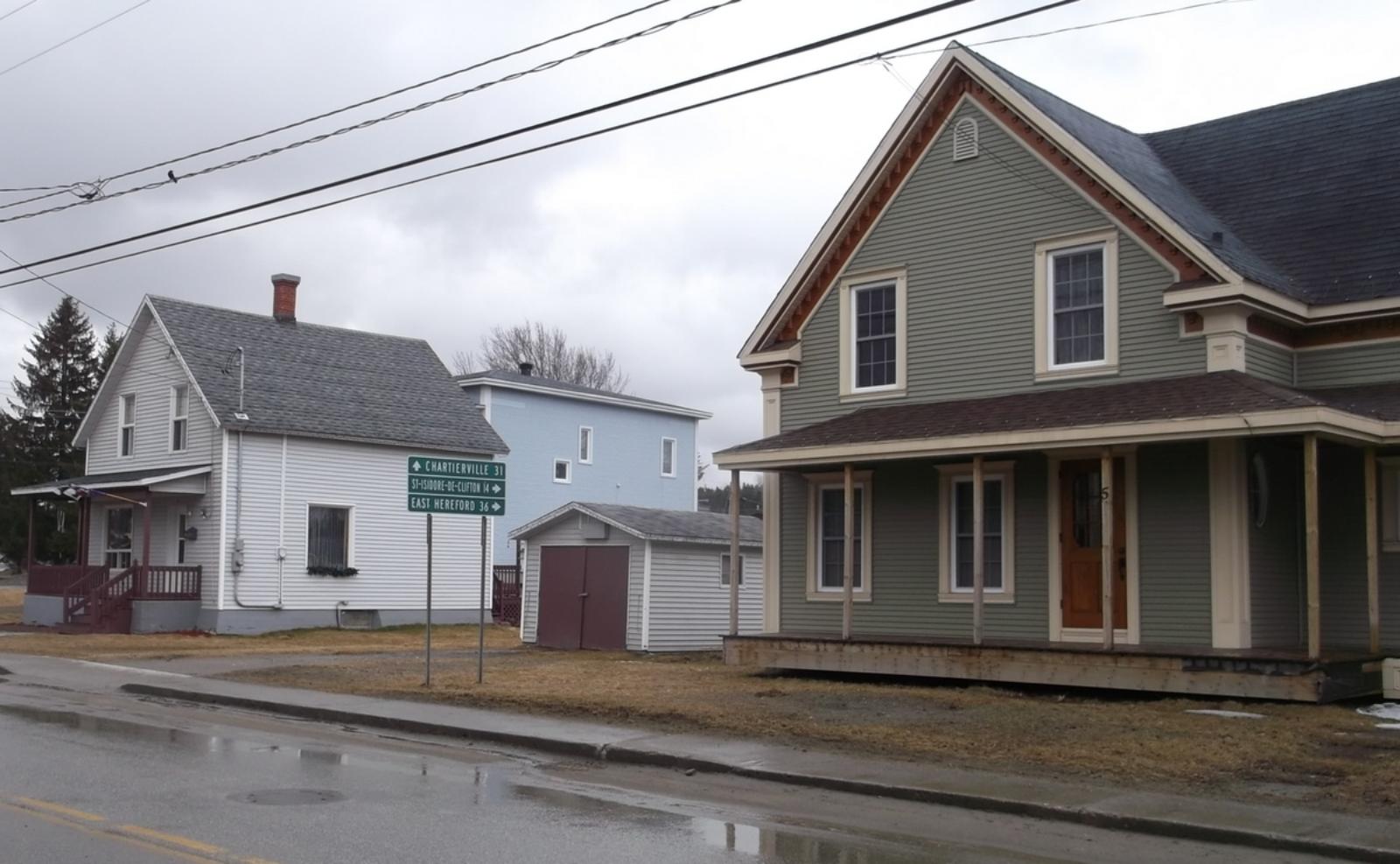
Sawyerville sits along County Highway 17 in rural Hale County, about 30 miles south of Tuscaloosa. Fewer than 2,000 residents share this low-lying farmland, yet the median listing price hit roughly $254,000 in spring 2025—far above the county’s average home value and nearly nine times the town’s typical household income. Newcomers attracted by ads for “estate-size lots” quickly learn that even basic errands require a half-hour drive.
The mismatch is clear on the ground. There’s no supermarket, pharmacy, or hospital inside the ZIP code, and cellular data can be spotty on rainy days. Property taxes stay modest, but upkeep on acre-plus parcels and well-water systems erases the savings fast. Buyers seeking elbow room might still like it here, but anyone counting on walkable luxuries will feel short-changed.
Sawyerville – Luxury 38.76 vs. Lifestyle 18.07
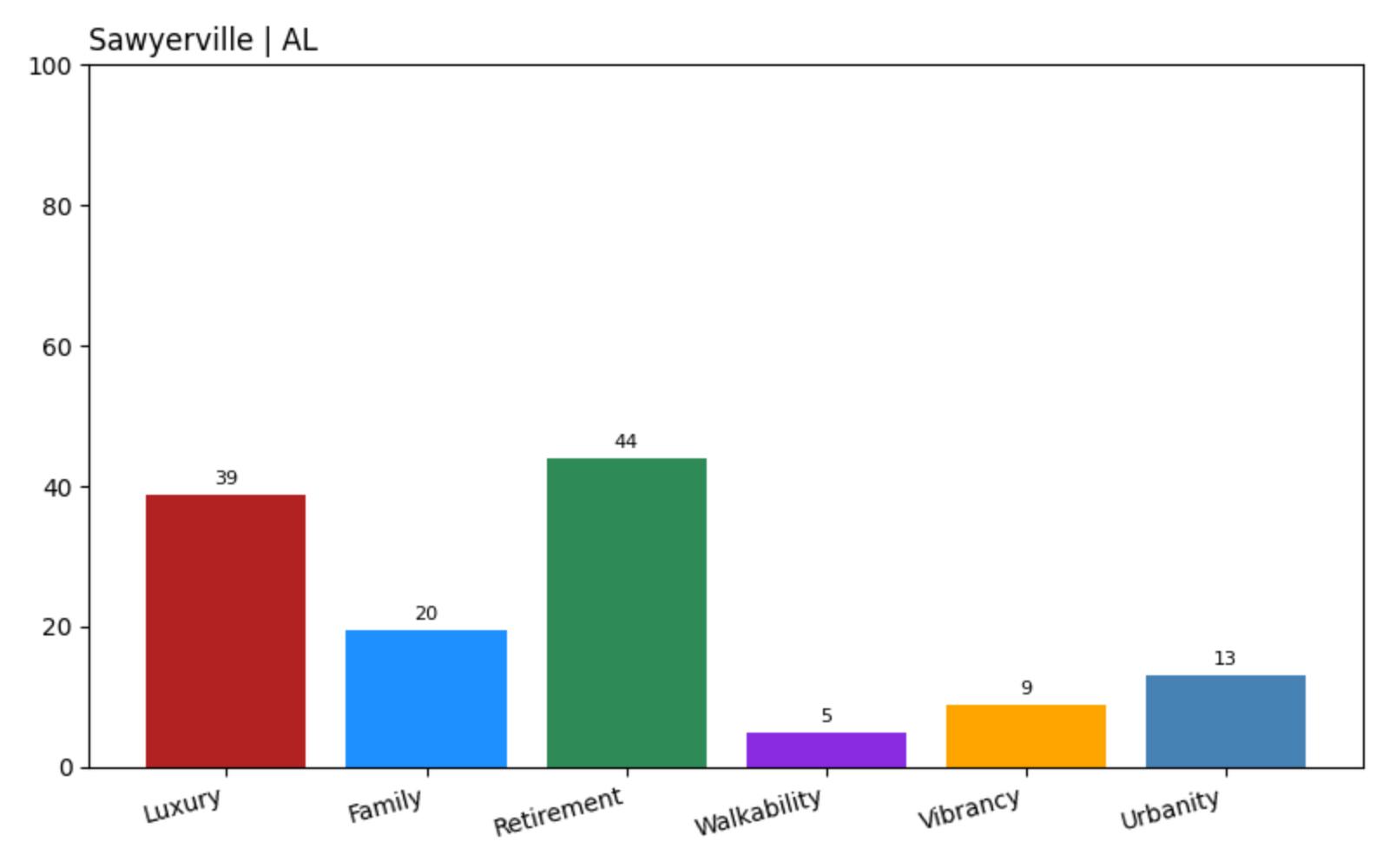
- Luxury Score: 38.76
- Family Friendliness: 19.55
- Retirement Friendliness: 43.92
- Walkability: 4.90
- Vibrancy: 8.91
- Urban Sophistication: 13.05
The raw scores spell it out. A bargain-level luxury rating pairs with single-digit walkability and vibrancy, so daily life revolves around a car, a yard, and very little else. Families tracking every amenity will likely keep driving west toward Tuscaloosa.
24. Epes – River Views, Paper-Thin Perks
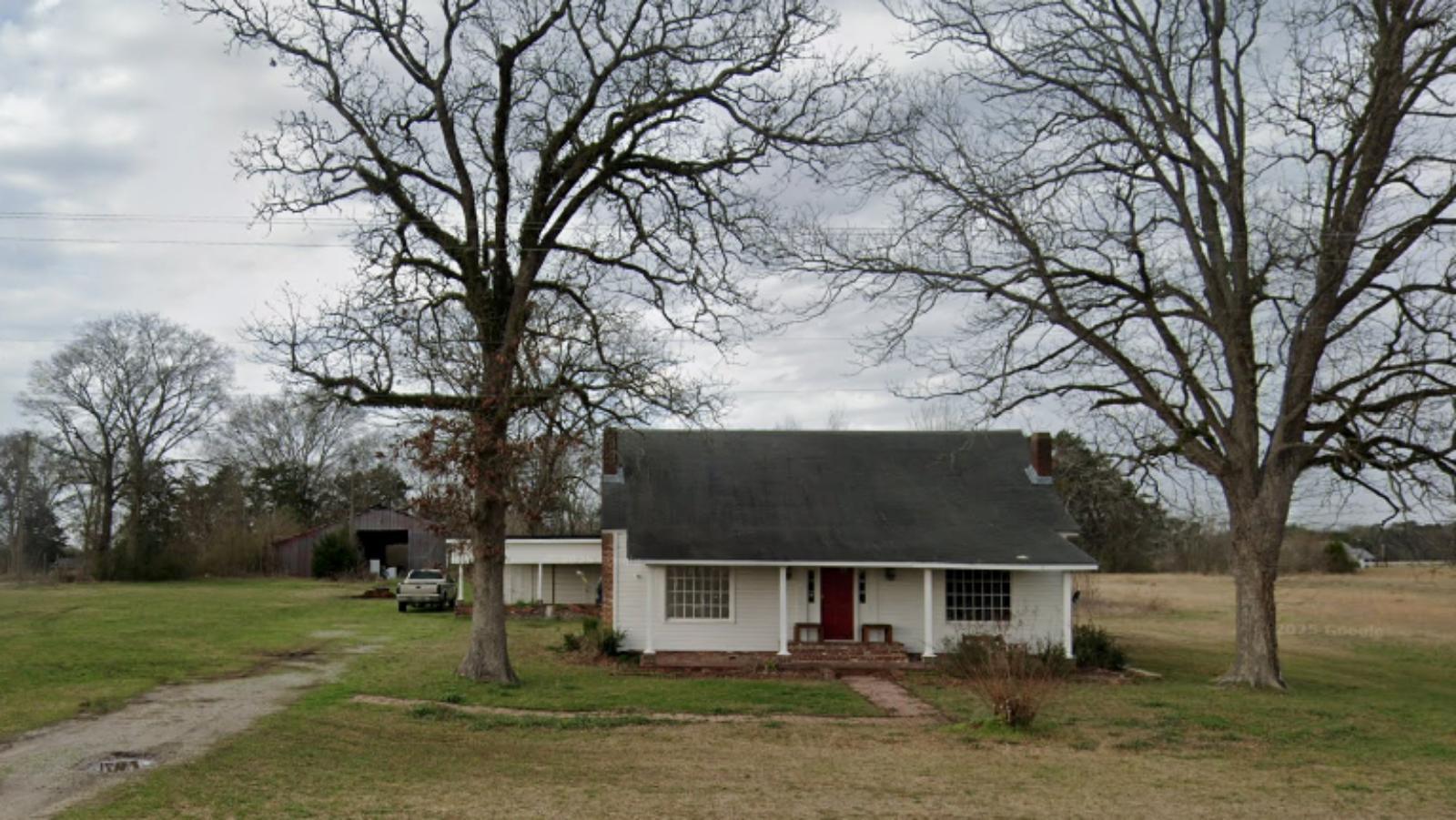
Epes hugs the Tombigbee River in Sumter County and boasts postcard sunsets over the water. Home values in the surrounding county hover near $115,000, yet spring listings in the 35460 ZIP code floated close to $270,000. With a median household income south of $25,000, locals joke that “big fish” cost less than riverfront debt.
A retired angler might love the peaceful boat ramps, but everyone else faces a 25-minute haul to Livingston for groceries, doctors, or high-speed internet. The cost-of-living index looks low on paper, yet gas and bridge tolls nibble away at any savings. Upscale cabin rentals push the luxury score up, but the lifestyle score stays anchored by scarce jobs and a high poverty rate.
Epes – Luxury 43.56 vs. Lifestyle 29.47

- Luxury Score: 43.56
- Family Friendliness: 28.86
- Retirement Friendliness: 94.09
- Walkability: 2.46
- Vibrancy: 13.91
- Urban Sophistication: 8.03
The bullet points show why weekend anglers grin while growing families groan: an A-plus retirement rating but walkability stuck below 3. Value-hunters who need schools and jobs see the warning lights long before reaching the water’s edge.
23. Millbrook – Suburban Price, Starter-Pack Services
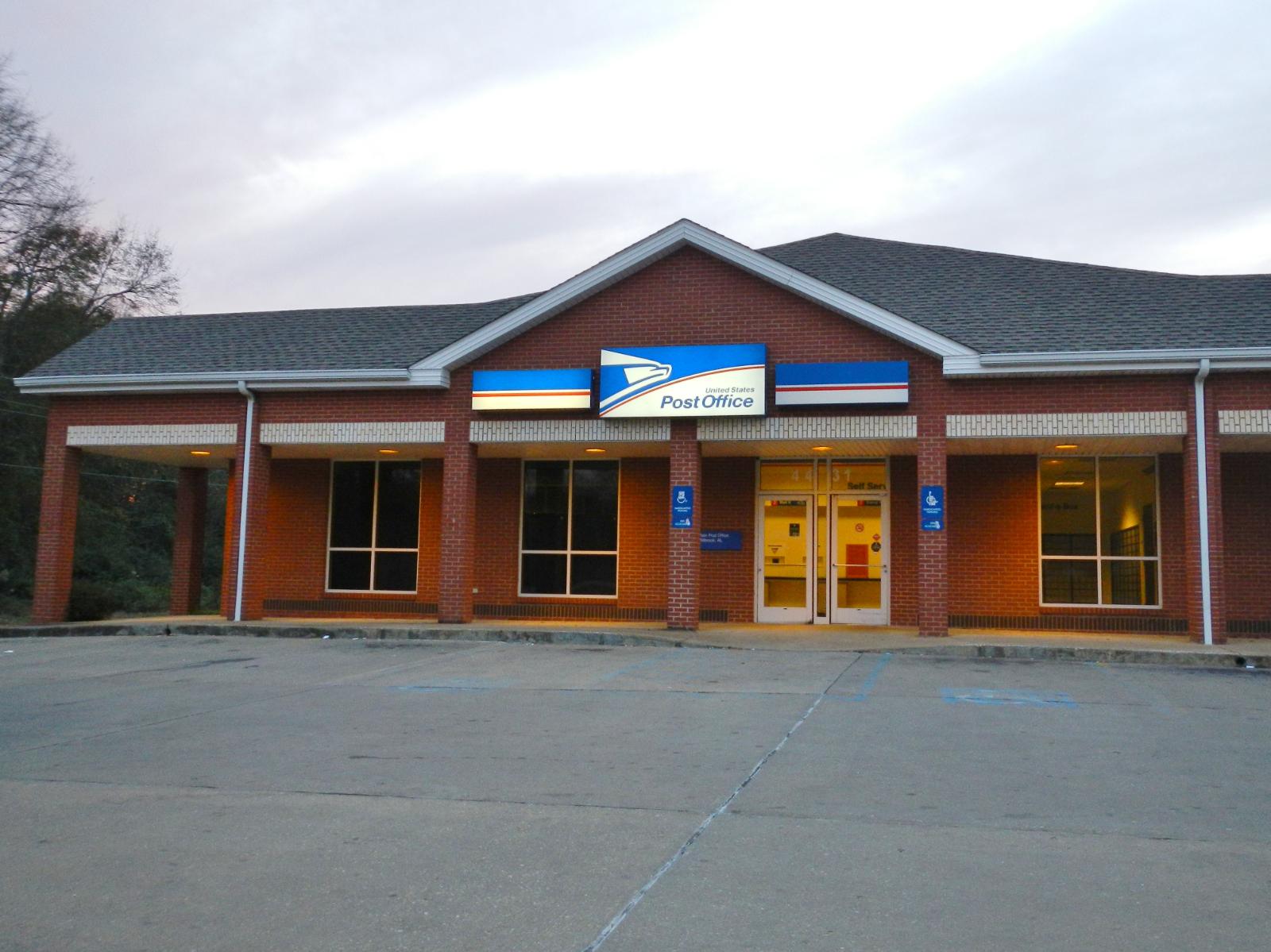
Just north of Montgomery, Millbrook markets itself as “minutes from everywhere.” True—but traffic on I-65 slashes those minutes at rush hour. Median list prices pushed past $290,000 in May 2025 while the average home value topped $211,000, a sum that feels steep once you factor in the city’s lower-middle household incomes and rising utility costs.
The town has grown fast, yet sidewalks and broadband upgrades lag behind new rooftops. A family gets decent parks and a respected youth baseball league, but fine dining still means a chain restaurant by the interchange. Anyone chasing a true luxury lifestyle may wonder why they’re paying Champagne prices for a root-beer selection.
Millbrook – Luxury 52.35 vs. Lifestyle 37.62
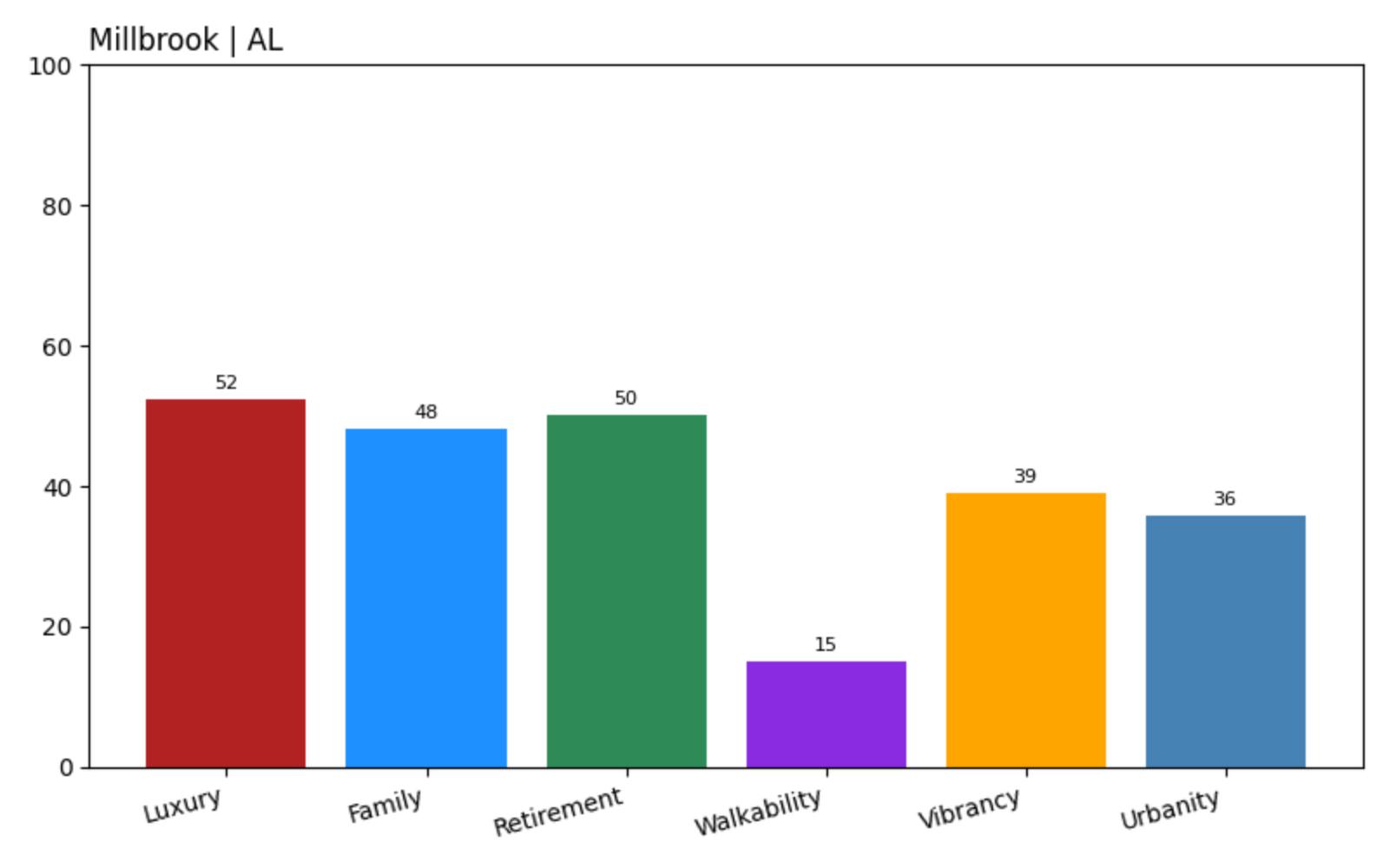
- Luxury Score: 52.35
- Family Friendliness: 48.22
- Retirement Friendliness: 50.23
- Walkability: 14.95
- Vibrancy: 38.97
- Urban Sophistication: 35.76
The mid-pack luxury score hides the reality that walkability sits below 15 and urban sophistication below 36. For many buyers, those numbers make surrounding Elmore County’s cheaper, rural spots look like smarter bets.
22. Laceys Spring – Mountain Views, Wallet Drains
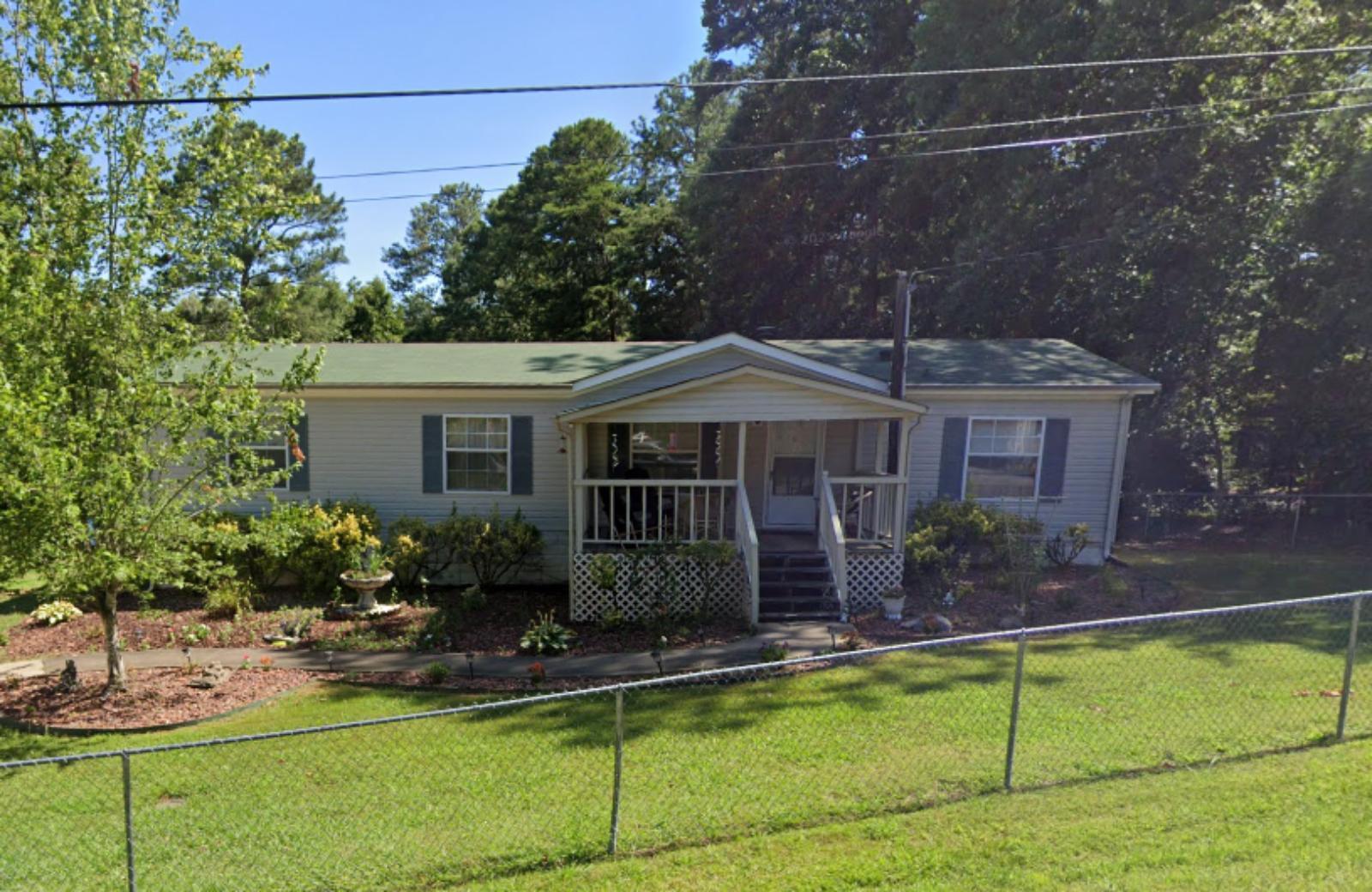
Laceys Spring clings to the rocky slopes south of Huntsville, delivering sweeping Tennessee River vistas—and construction costs to match. The median listing price shot past $330,000 this year, out-running many first-time buyers even as nearby Huntsville posts new-build neighborhoods closer to urban jobs and services.
Most streets lack shoulders, let alone sidewalks, and cell reception dips behind ridgelines. Daily errands often require a 20-mile round trip to Redstone Arsenal’s shopping corridor. Lake enthusiasts and tele-commuters with deep pockets might accept the trade-off, but budget-minded families soon learn that even “starter” homes demand luxury-level bids.
Laceys Spring – Luxury 53.31 vs. Lifestyle 39.25
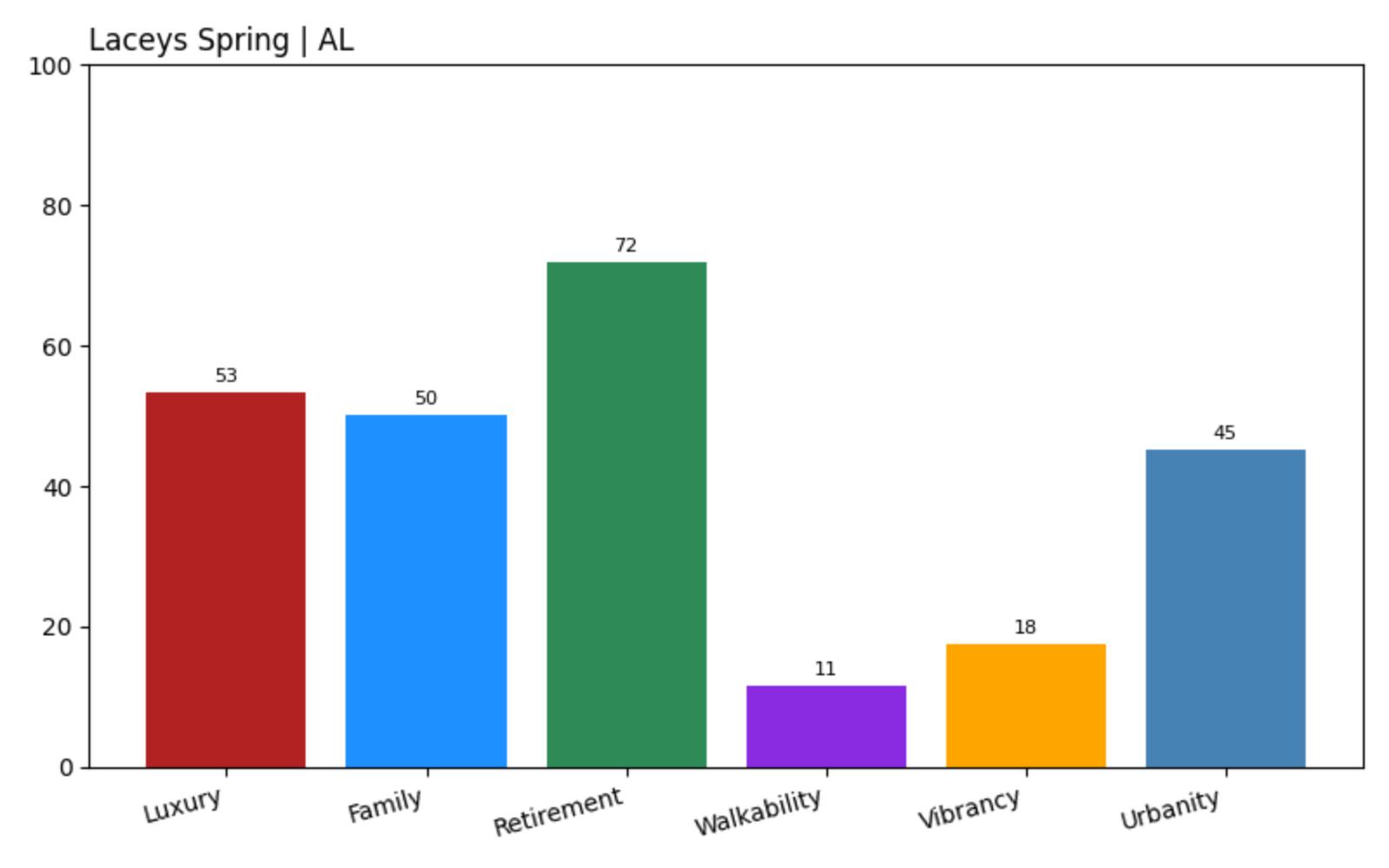
- Luxury Score: 53.31
- Family Friendliness: 50.08
- Retirement Friendliness: 71.89
- Walkability: 11.50
- Vibrancy: 17.58
- Urban Sophistication: 45.20
The data confirm what drive-time apps already hint: very low walkability and vibrancy force most residents back into their cars. Without fresh shopping or culture, the scenic ridge begins to feel like a costly cul-de-sac.
21. Cropwell – Lakefront Glam, Everyday Gaps
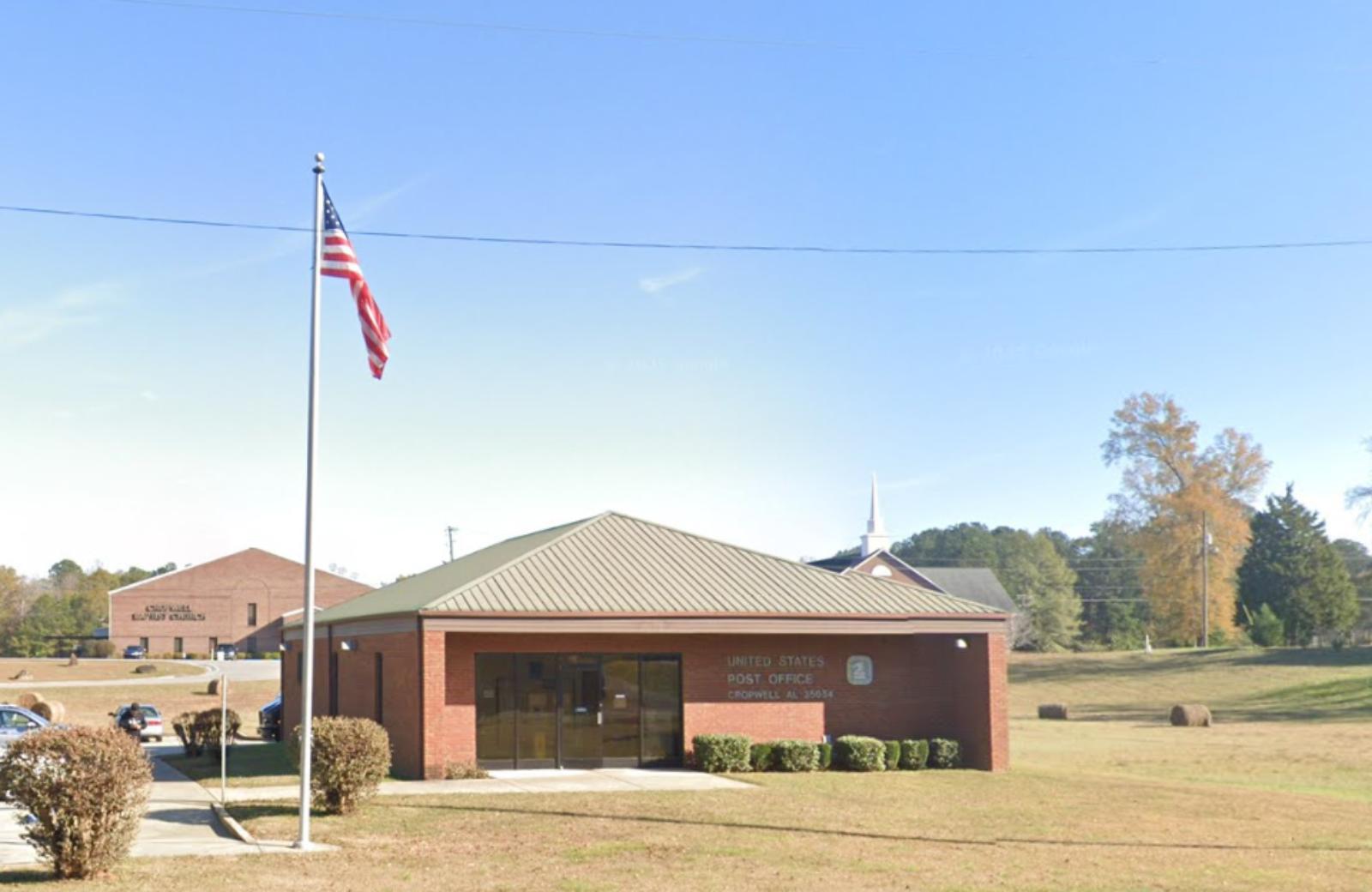
Cropwell fronts Logan Martin Lake in St. Clair County, so waterfront listings easily clear $400,000. That’s double the county’s average home value and requires a six-figure salary many locals simply do not earn. A small marina and a seasonal restaurant add weekend flavor but little year-round infrastructure.
Housing expenses headline the household budget, yet residents still drive to Pell City for big-box stores, urgent care, or a movie. The area scores decently for retirement living thanks to quiet coves, but young professionals may struggle to justify the hefty mortgage for a lifestyle that winds down at sundown.
Cropwell – Luxury 54.99 vs. Lifestyle 39.87
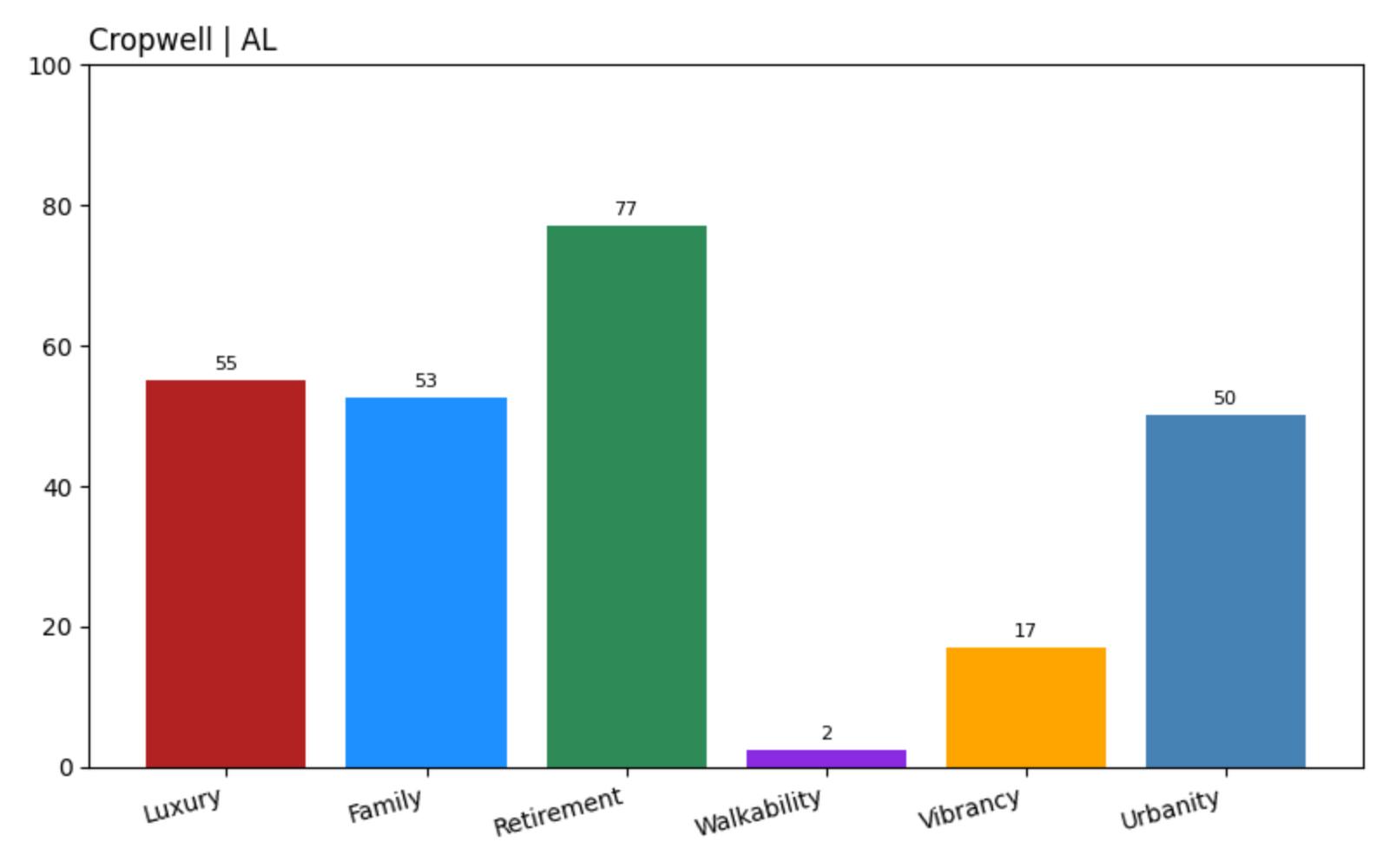
- Luxury Score: 54.99
- Family Friendliness: 52.56
- Retirement Friendliness: 77.16
- Walkability: 2.32
- Vibrancy: 17.07
- Urban Sophistication: 50.24
The ultra-low walkability score of 2.32 pairs with modest vibrancy, signaling a resort mood that fades Monday morning. Unless lake access tops your wish list, this price tag may feel all wet.
20. Hope Hull – High Prices, Sparse Surroundings
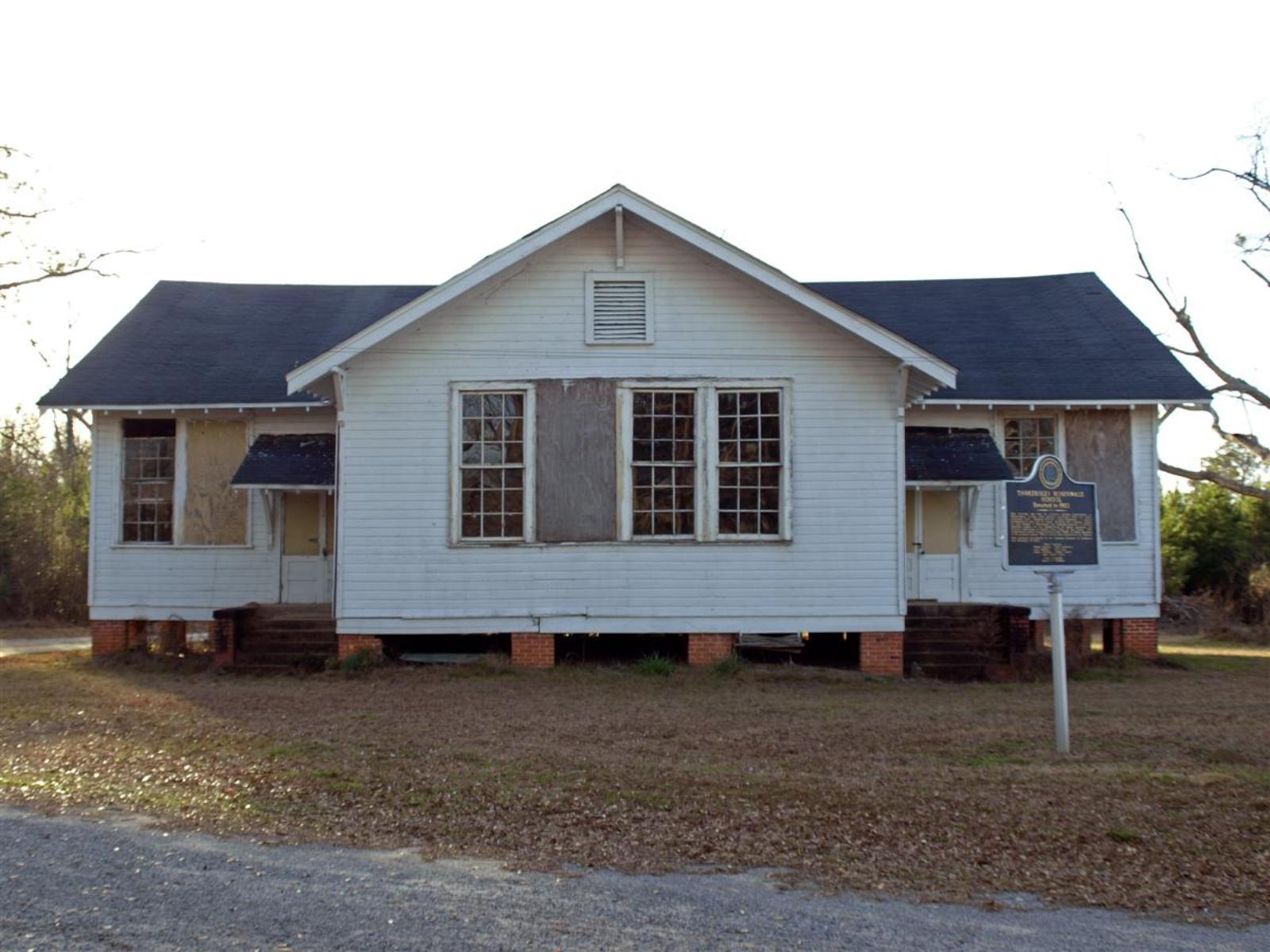
Hope Hull lies just south of Montgomery and is often pitched as an upscale rural enclave with easy access to the capital city. Yet for all the marketing gloss, this unincorporated area offers little beyond a few churches, small businesses, and an industrial park. Median listing prices cracked $310,000 in early 2025, but daily life lacks the amenities expected at that price point—no town center, limited dining, and minimal retail options.
The housing here tends to be large-lot and custom-built, which appeals to retirees seeking peace and space. But young families or professionals may struggle with the lack of walkable services and weak social infrastructure. Even fast food requires a car ride, and public safety coverage is stretched thin across the sprawling ZIP code.
Hope Hull – Luxury 60.98 vs. Lifestyle 47.36
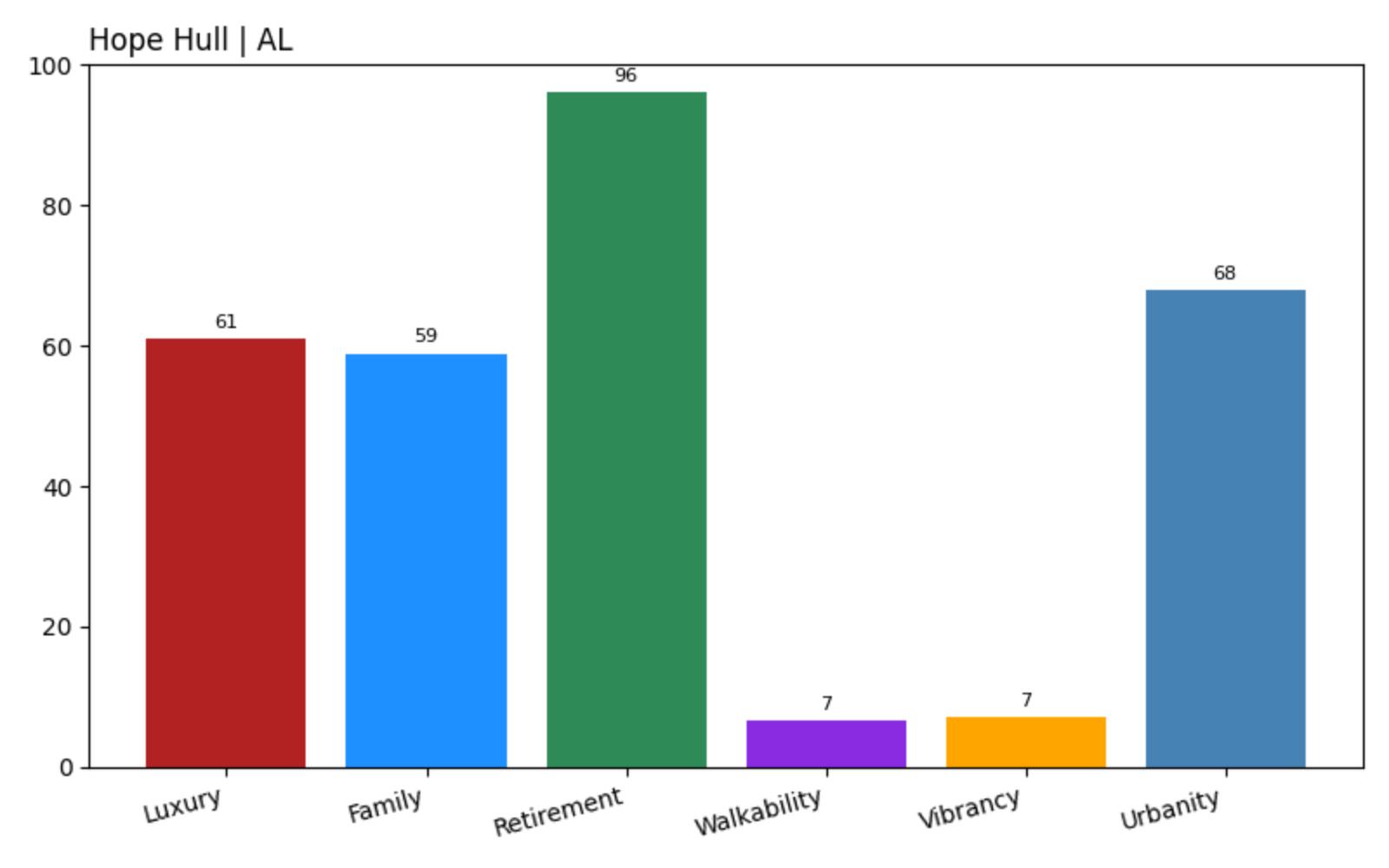
- Luxury Score: 60.98
- Family Friendliness: 58.91
- Retirement Friendliness: 96.13
- Walkability: 6.69
- Vibrancy: 7.17
- Urban Sophistication: 67.91
The elevated retirement score helps explain some of the appeal, but low walkability and vibrancy drag down overall livability. This is a spot where luxury feels like isolation, not elevation.
19. Fultondale – Suburban Glitz, Missing Soul
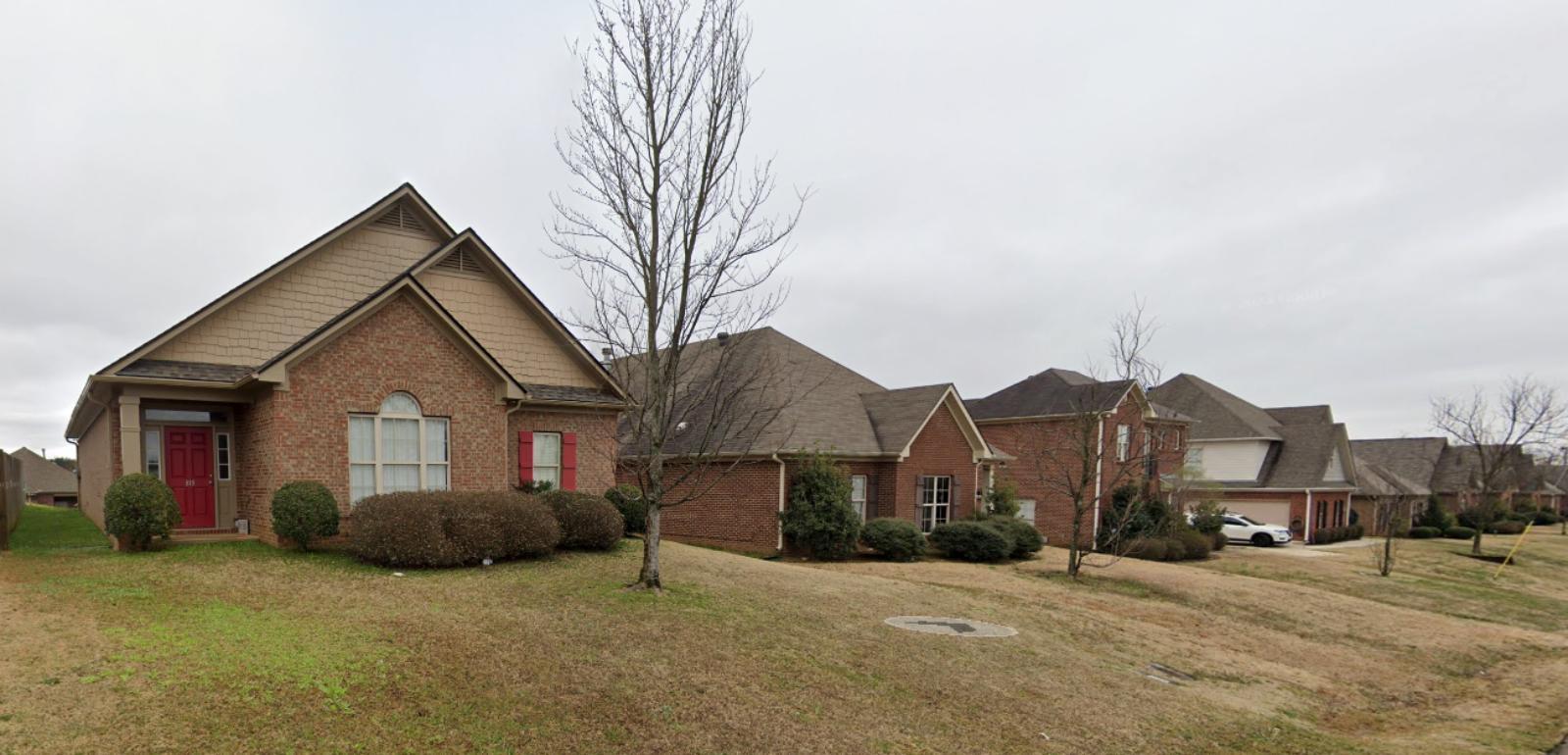
North of Birmingham, Fultondale was hit hard by a 2021 tornado and has since seen a surge in redevelopment. Median home prices climbed past $250,000 in 2025, yet buyers often find that the rebuilt landscape favors cookie-cutter housing and strip malls over charm or community warmth. Despite the newness, many streets feel sterile.
Families may appreciate the city’s proximity to downtown Birmingham, but they’ll also contend with traffic, noise, and a school system that ranks below nearby alternatives. Fultondale talks up its access and convenience, but the lifestyle side of the ledger—culture, cohesion, curb appeal—remains thin.
Fultondale – Luxury 59.47 vs. Lifestyle 42.85
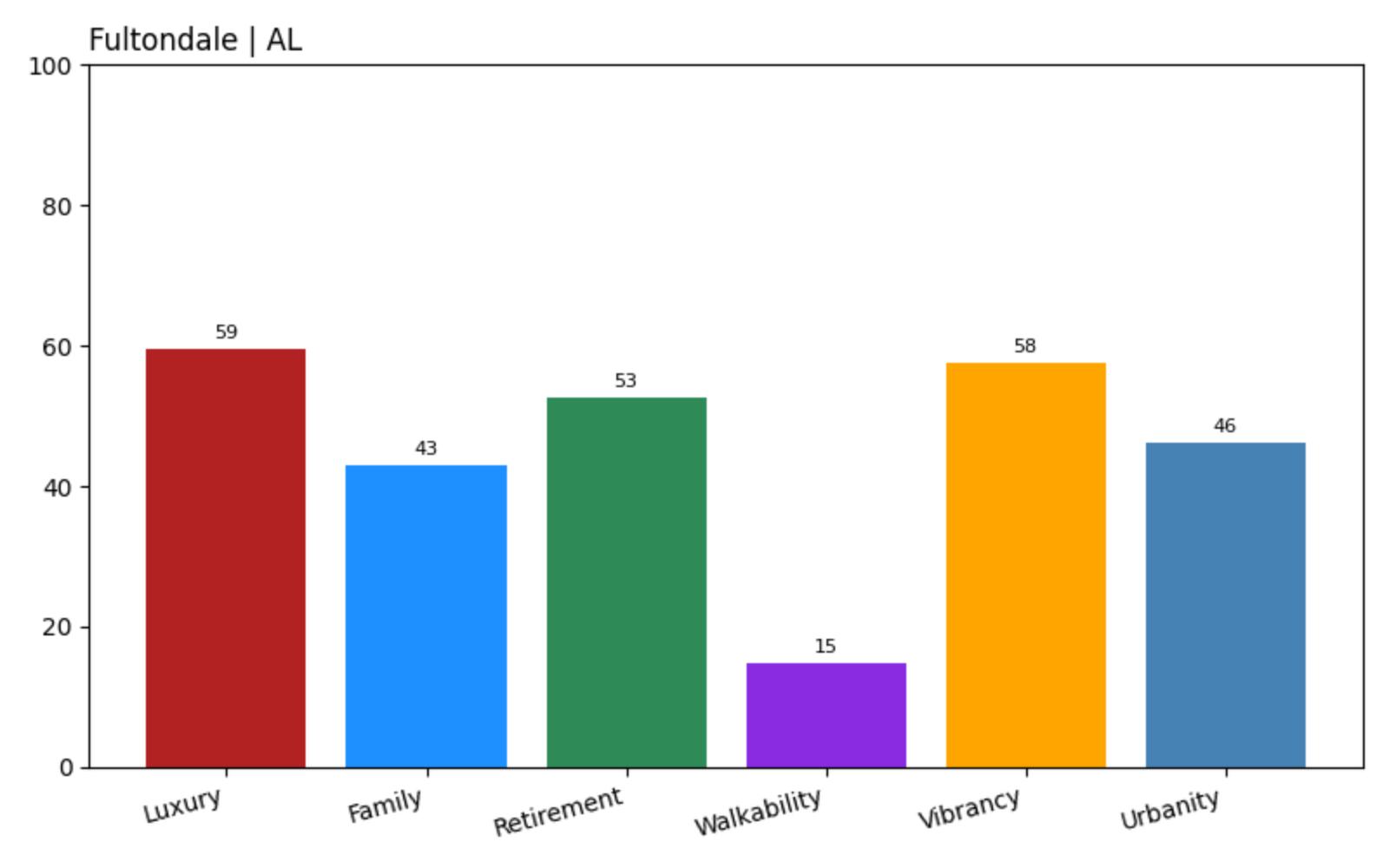
- Luxury Score: 59.47
- Family Friendliness: 43.01
- Retirement Friendliness: 52.68
- Walkability: 14.76
- Vibrancy: 57.61
- Urban Sophistication: 46.17
Vibrancy stands out here, but other lifestyle metrics drag the total experience down. Unless you’re laser-focused on commute times, Fultondale’s value equation may not pencil out.
18. Owens Cross Roads – Luxe Labels, Limited Living
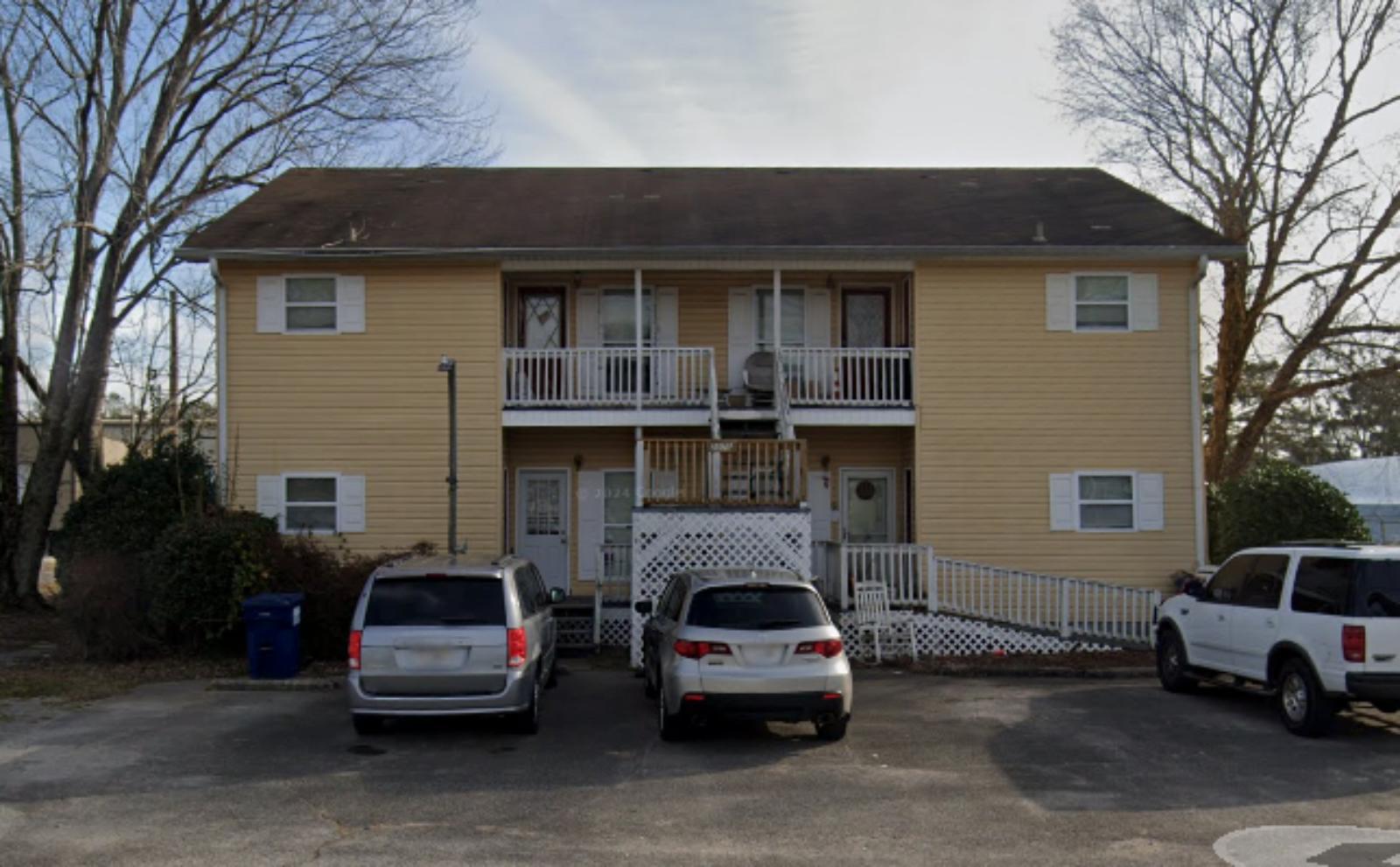
Just southeast of Huntsville, Owens Cross Roads is a small town with big listings. Custom homes with premium finishes have pushed the average price above $375,000 in 2025—on par with neighborhoods inside Huntsville proper. But the small-town setting lacks the dining, culture, and infrastructure to justify the pricing.
The area draws retirees and professionals seeking a short commute, but the tradeoff is clear. Amenities remain minimal, schools are mid-tier, and most daily services require a drive. For those used to big-city comforts, Owens Cross Roads can feel more like a high-end cul-de-sac than a vibrant hometown.
Owens Cross Roads – Luxury 60.22 vs. Lifestyle 44.29
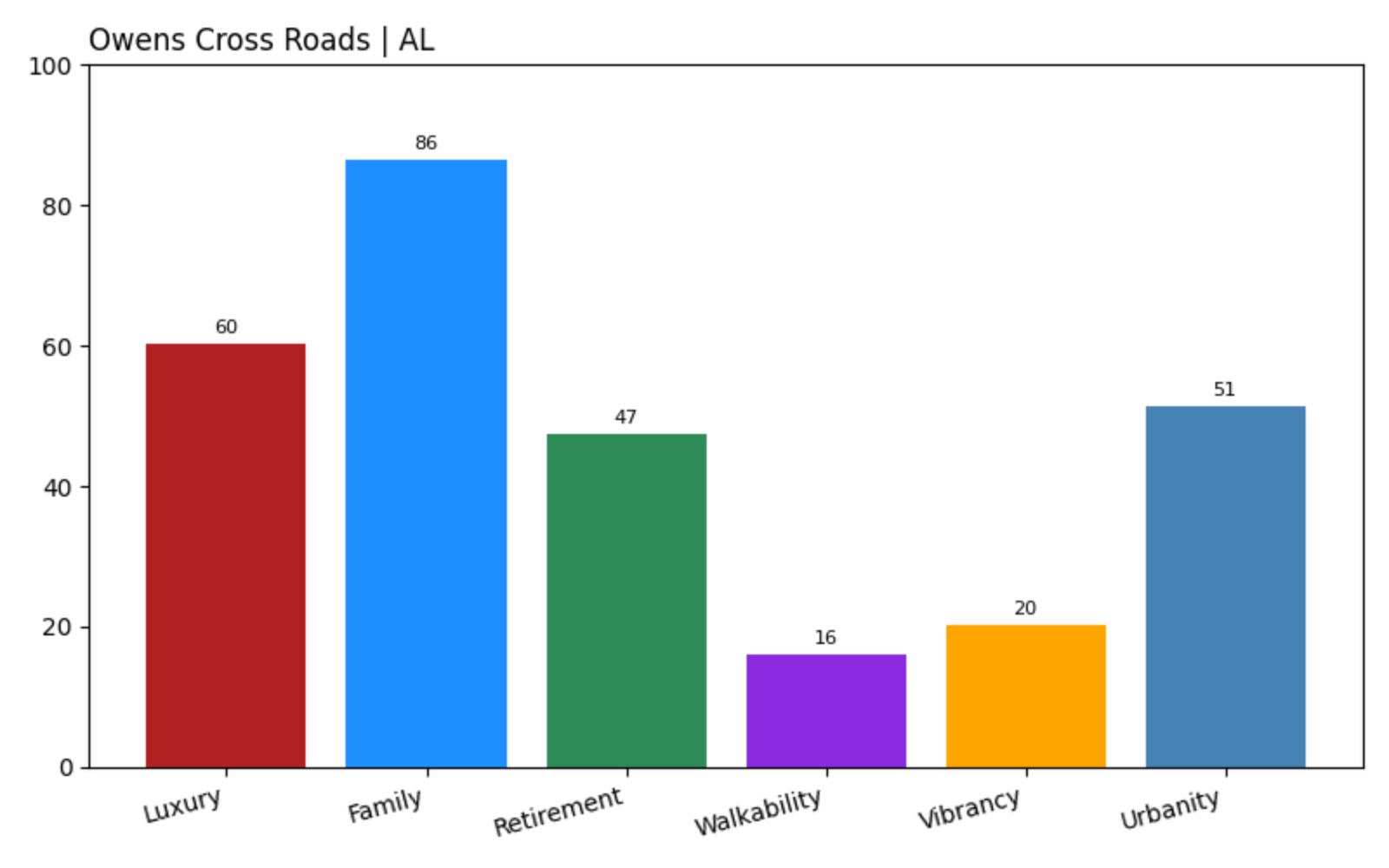
- Luxury Score: 60.22
- Family Friendliness: 86.45
- Retirement Friendliness: 47.40
- Walkability: 16.01
- Vibrancy: 20.23
- Urban Sophistication: 51.34
Strong family friendliness helps this town hold its ground, but lackluster vibrancy and walkability undermine the luxury pitch. High-end buyers expecting perks may be underwhelmed once they settle in.
17. Irondale – Pricey, Patchy, and In-Between
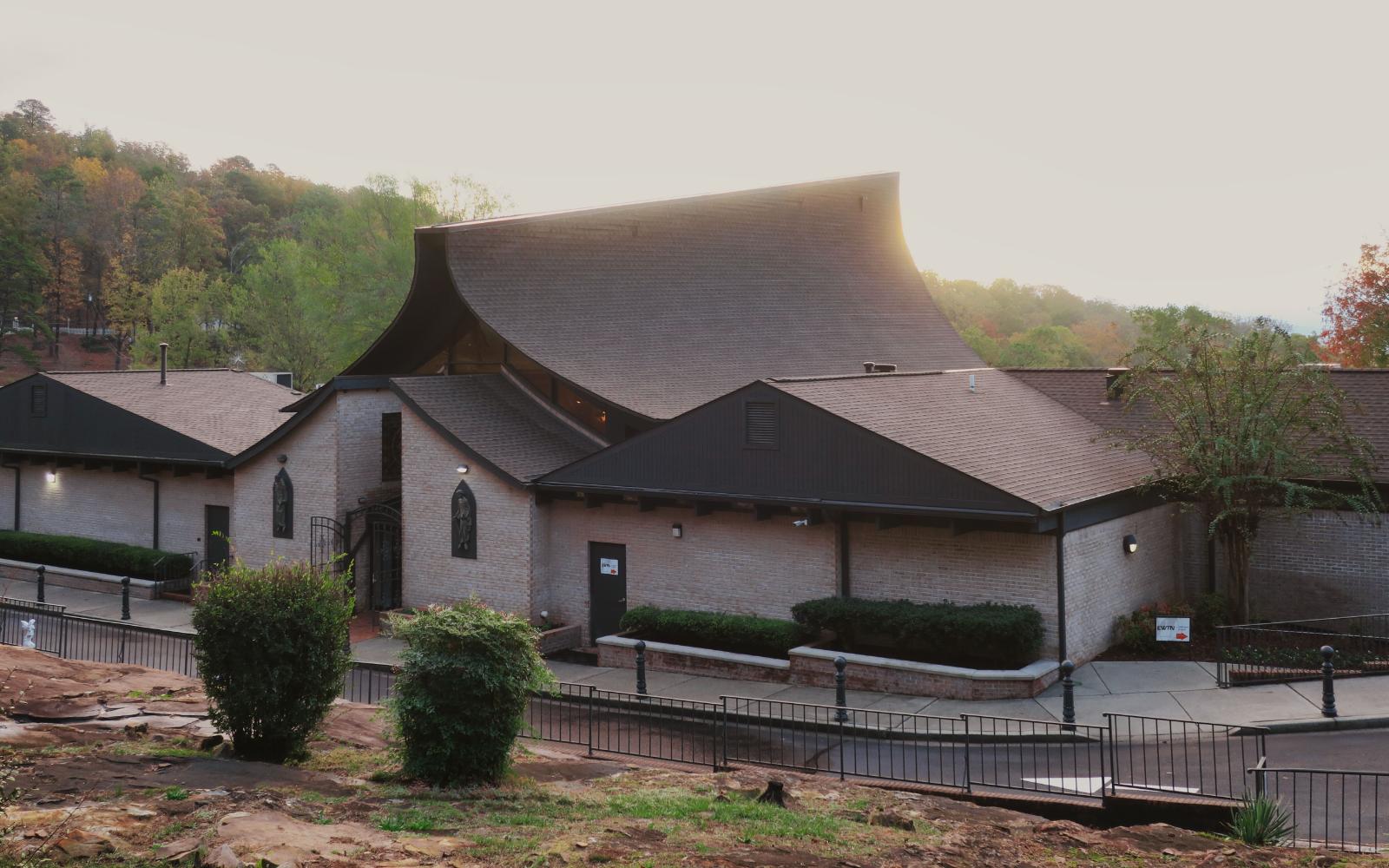
Irondale is often lumped into Birmingham’s eastern suburbs, known primarily for its rail yard and as the hometown of the “EWTN” Catholic media empire. Median home values hover near $265,000, but the town’s uneven development means some blocks feel upmarket while others lack basic services or consistent infrastructure.
Commuters enjoy decent proximity to the city, but walkability is poor, and the local economy hasn’t kept pace with the rising housing costs. Parks and small businesses dot the area, but there’s little cohesion or sense of identity. Irondale wants to be more than a commuter town, but right now, its luxury aspirations outstrip its lifestyle offerings.
Irondale – Luxury 64.13 vs. Lifestyle 47.5
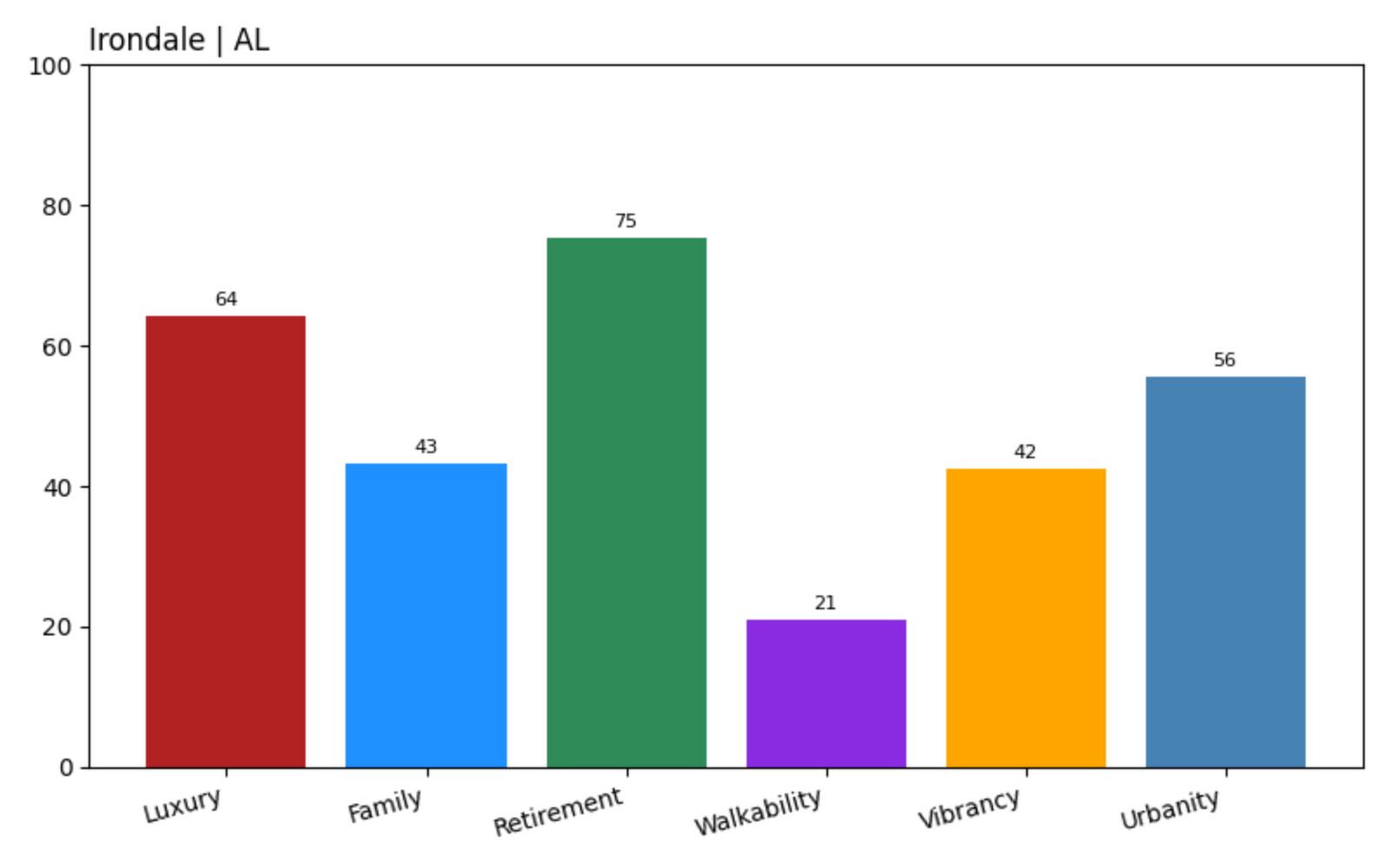
- Luxury Score: 64.13
- Family Friendliness: 43.27
- Retirement Friendliness: 75.41
- Walkability: 20.85
- Vibrancy: 42.38
- Urban Sophistication: 55.57
Despite decent retirement metrics, this town still struggles with consistency. Irondale may look good on a spreadsheet but delivers mixed results in real life.
16. Homewood – Cool Zip Code, Cold Reality
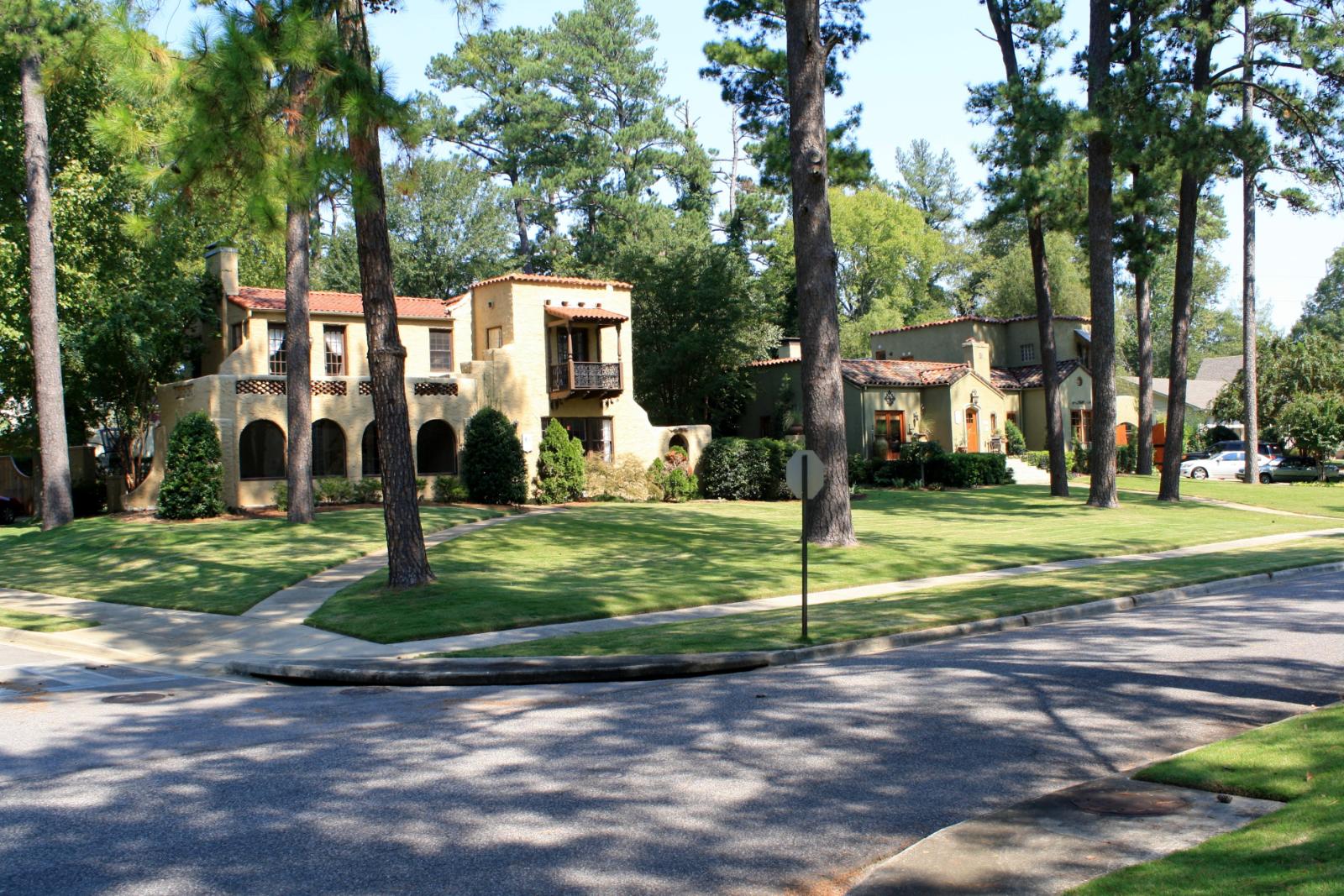
Homewood is often seen as one of Birmingham’s most desirable addresses. Chic boutiques, coffee shops, and historic homes give the city a polished feel—but all that charm comes at a premium. In 2025, median home prices have soared to nearly $500,000, and property taxes are some of the highest in the region.
While the town scores well on walkability and vibrancy, that lifestyle comes with congestion, tight parking, and growing concerns about affordability. For a young family or middle-class couple, the town’s cool factor may not justify the cost, especially with cheaper, rising alternatives in nearby Hoover or Vestavia Hills.
Homewood – Luxury 82.06 vs. Lifestyle 64.59

- Luxury Score: 82.06
- Family Friendliness: 56.46
- Retirement Friendliness: 50.19
- Walkability: 67.82
- Vibrancy: 72.91
- Urban Sophistication: 75.57
Despite high lifestyle components, the cost-to-comfort ratio continues to worsen. Luxury here is real—but unless your income matches the zip code, that luxury may feel more stressful than stylish.
15. Dauphin Island – Island Costs, Mainland Shortfalls
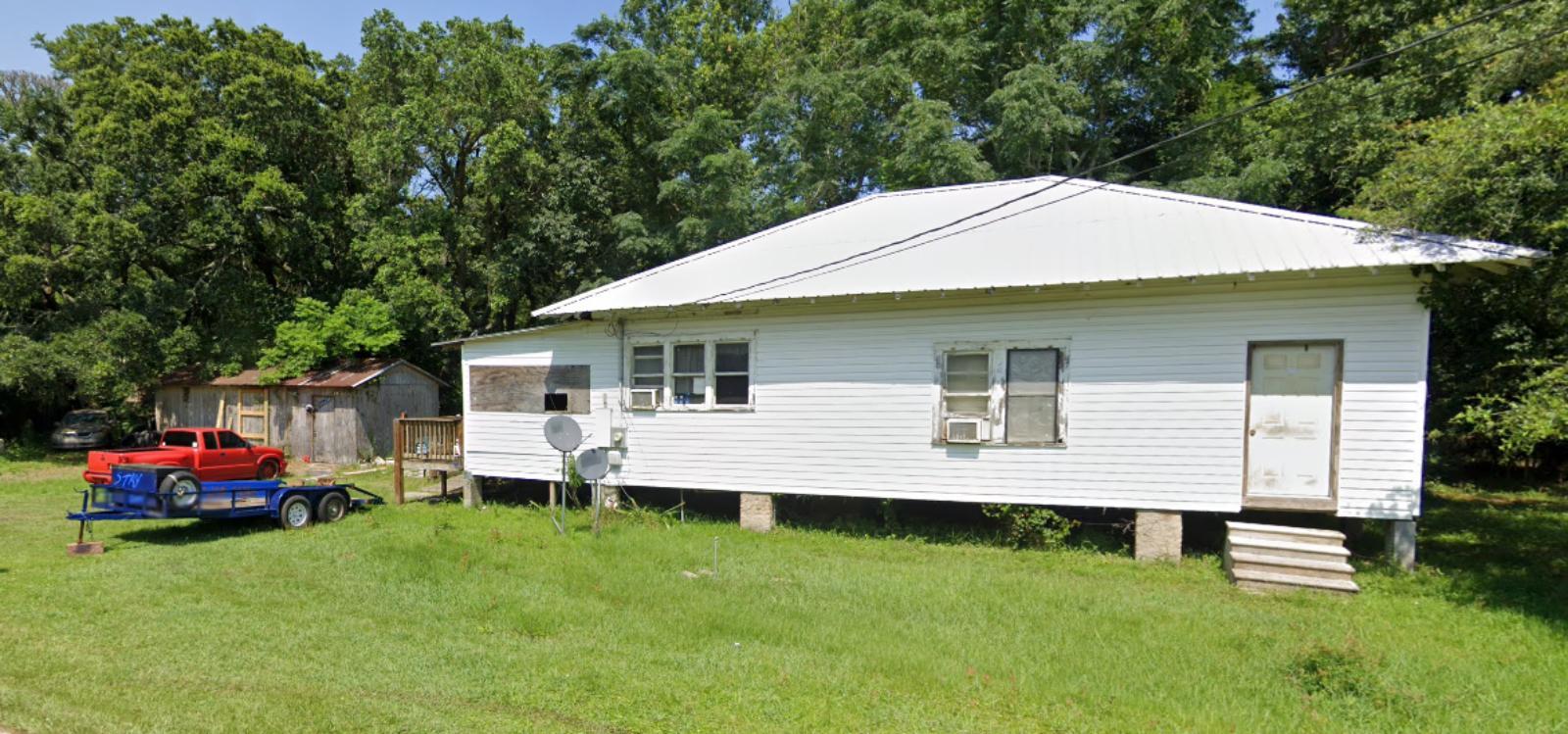
Dauphin Island sounds like a dream: coastal views, sandy beaches, and seclusion on Alabama’s Gulf Coast. But for permanent residents, that dream can come with headaches. In 2025, median listing prices top $460,000—yet hurricane risk, insurance premiums, and limited services make daily life more demanding than luxurious.
Shops and restaurants operate on tourist-season hours, and access to healthcare or major retailers often requires a 45-minute drive back to Mobile. The town feels idyllic in a brochure, but families and year-round residents may find themselves overpaying for underwhelming infrastructure and limited year-round amenities.
Dauphin Island – Luxury 56.5 vs. Lifestyle 38.79
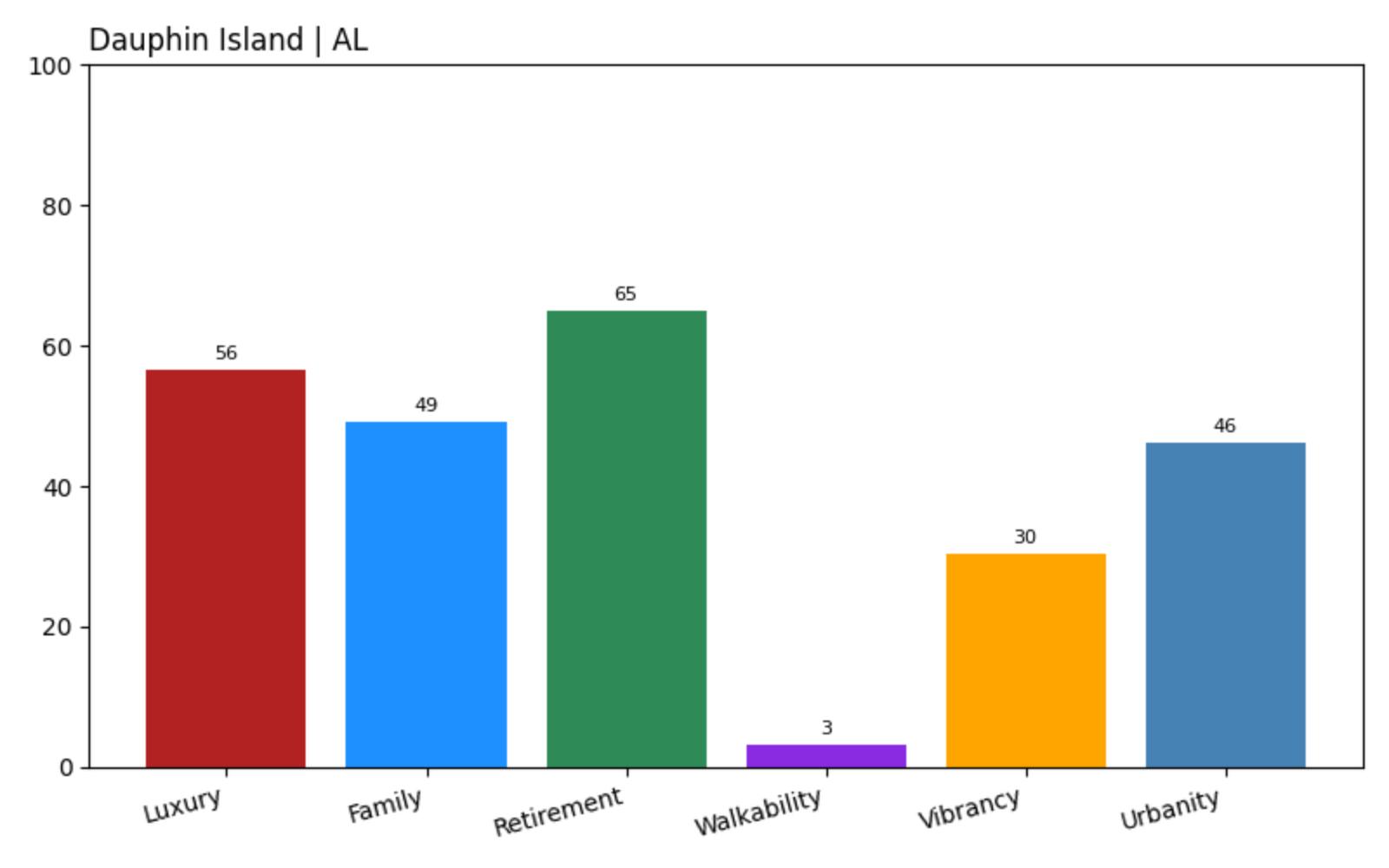
- Luxury Score: 56.5
- Family Friendliness: 49.04
- Retirement Friendliness: 64.98
- Walkability: 3.22
- Vibrancy: 30.43
- Urban Sophistication: 46.27
Despite scenic beauty and decent retirement appeal, low walkability and modest vibrancy weigh heavily. Tourists may love it—but for full-timers, it’s a luxury lifestyle that lacks depth and convenience.
14. Harpersville – High Hopes, Half Measures
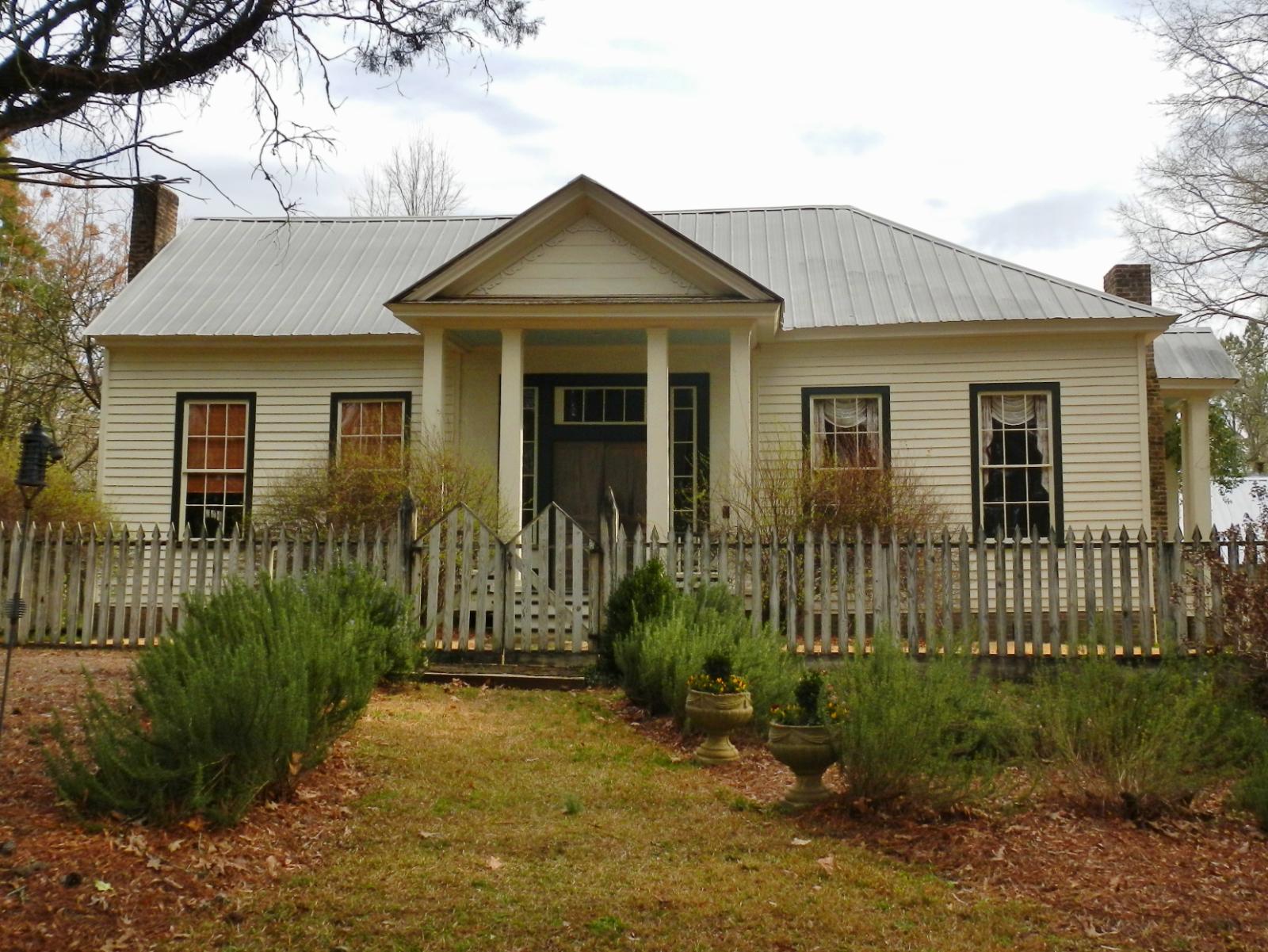
Harpersville sits at the junction of U.S. Highway 280 and County Road 55, about 35 miles southeast of Birmingham. It’s marketed as a small-town alternative for luxury buyers—especially those eyeing land. But for all the pastoral charm, residents often pay more than $300,000 for homes in an area that offers very little in terms of modern amenities.
Public transport is non-existent, internet options are limited, and retail offerings are sparse. Residents still rely on neighboring Chelsea or Sylacauga for shopping, medical care, and dining. Harpersville offers land and quiet, but for those expecting luxury-level services to match the price, the mismatch is hard to ignore.
Harpersville – Luxury 56.56 vs. Lifestyle 38.25
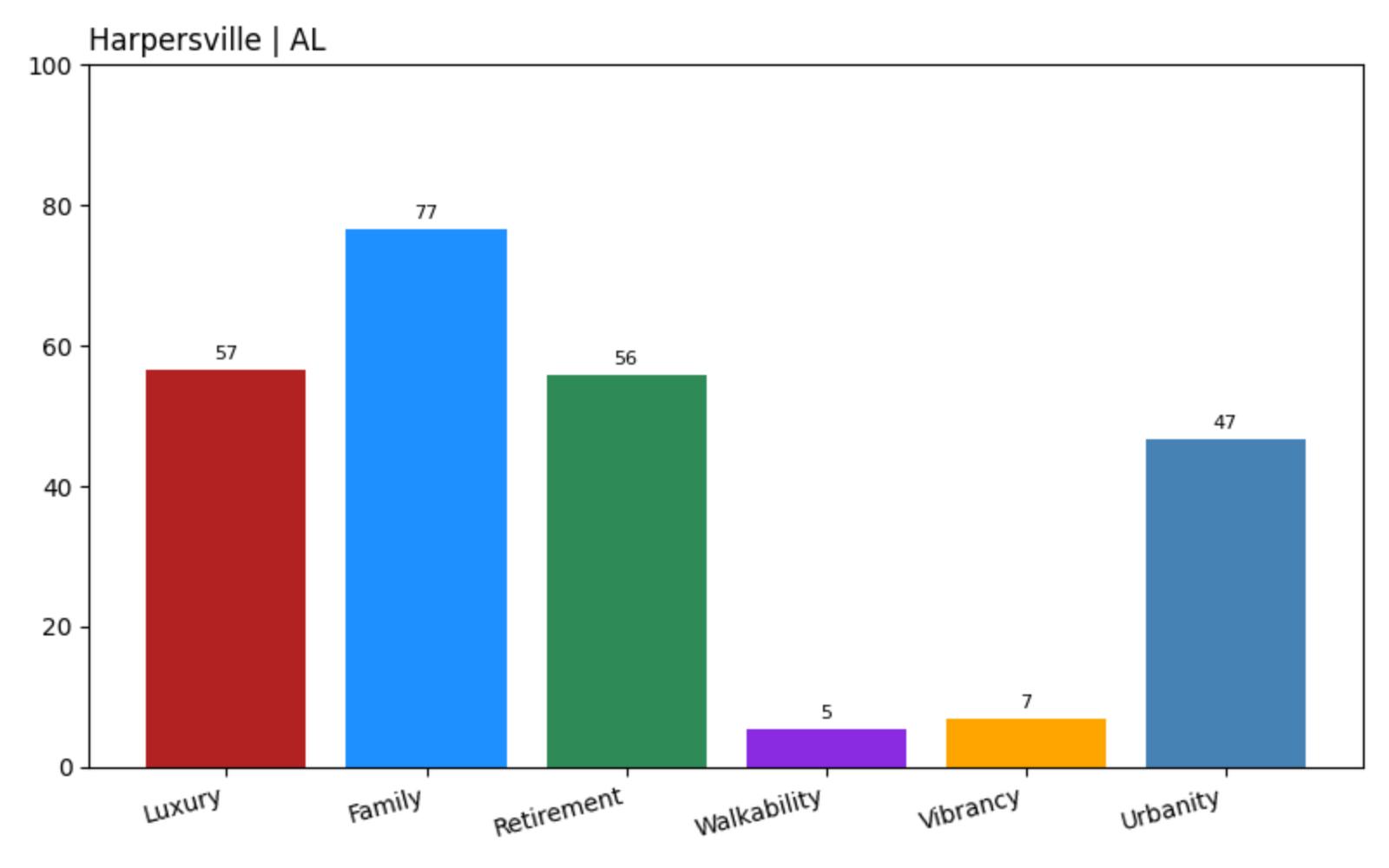
- Luxury Score: 56.56
- Family Friendliness: 76.66
- Retirement Friendliness: 55.79
- Walkability: 5.31
- Vibrancy: 6.81
- Urban Sophistication: 46.71
Family friendliness scores high, but extremely low vibrancy and walkability speak volumes. For many, the town’s value proposition falters once you leave the brochure behind.
13. Hoover – Rising Prices, Falling Value
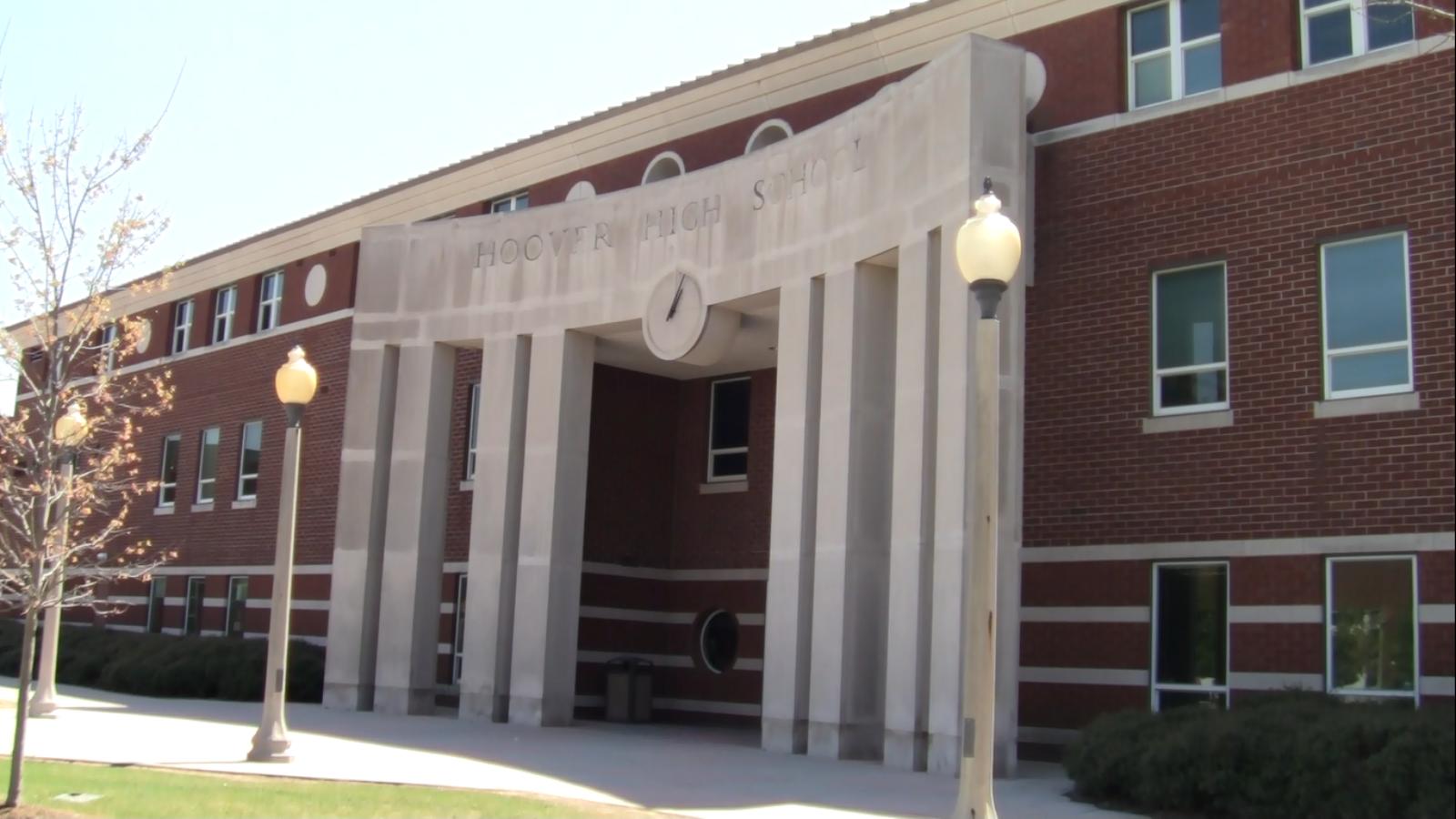
Hoover has long been considered a prime Birmingham suburb, with a reputation for strong schools and convenient shopping. But lately, the city’s rapid development has led to mounting concerns: traffic congestion, rising housing costs, and strained infrastructure. Median home prices now hover near $400,000, putting pressure on middle-income families.
The Riverchase Galleria remains a regional retail draw, but some residents argue the city’s expansion is outpacing its charm. Sidewalk coverage is uneven, and newer developments often lack the cohesive feel of older neighborhoods. For buyers chasing suburban luxury, Hoover may be edging into overpriced territory.
Hoover – Luxury 75.8 vs. Lifestyle 56.41
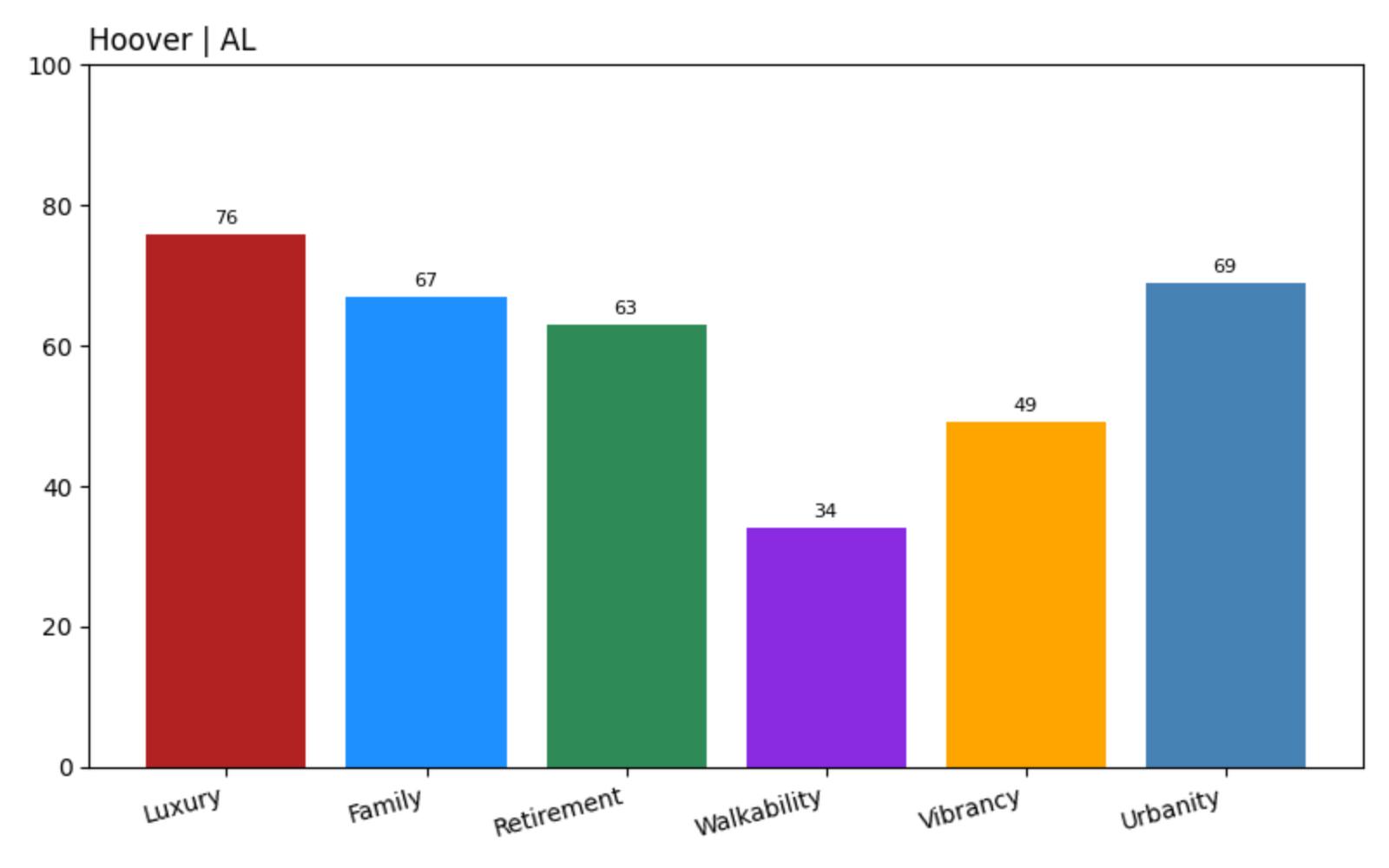
- Luxury Score: 75.8
- Family Friendliness: 66.86
- Retirement Friendliness: 62.87
- Walkability: 34.17
- Vibrancy: 49.16
- Urban Sophistication: 69.00
Good family and urban sophistication scores help, but middling walkability and mounting traffic costs dull Hoover’s shine. It’s still desirable—just less of a slam dunk at today’s prices.
12. Vestavia Hills – High-End Address, Mixed Returns
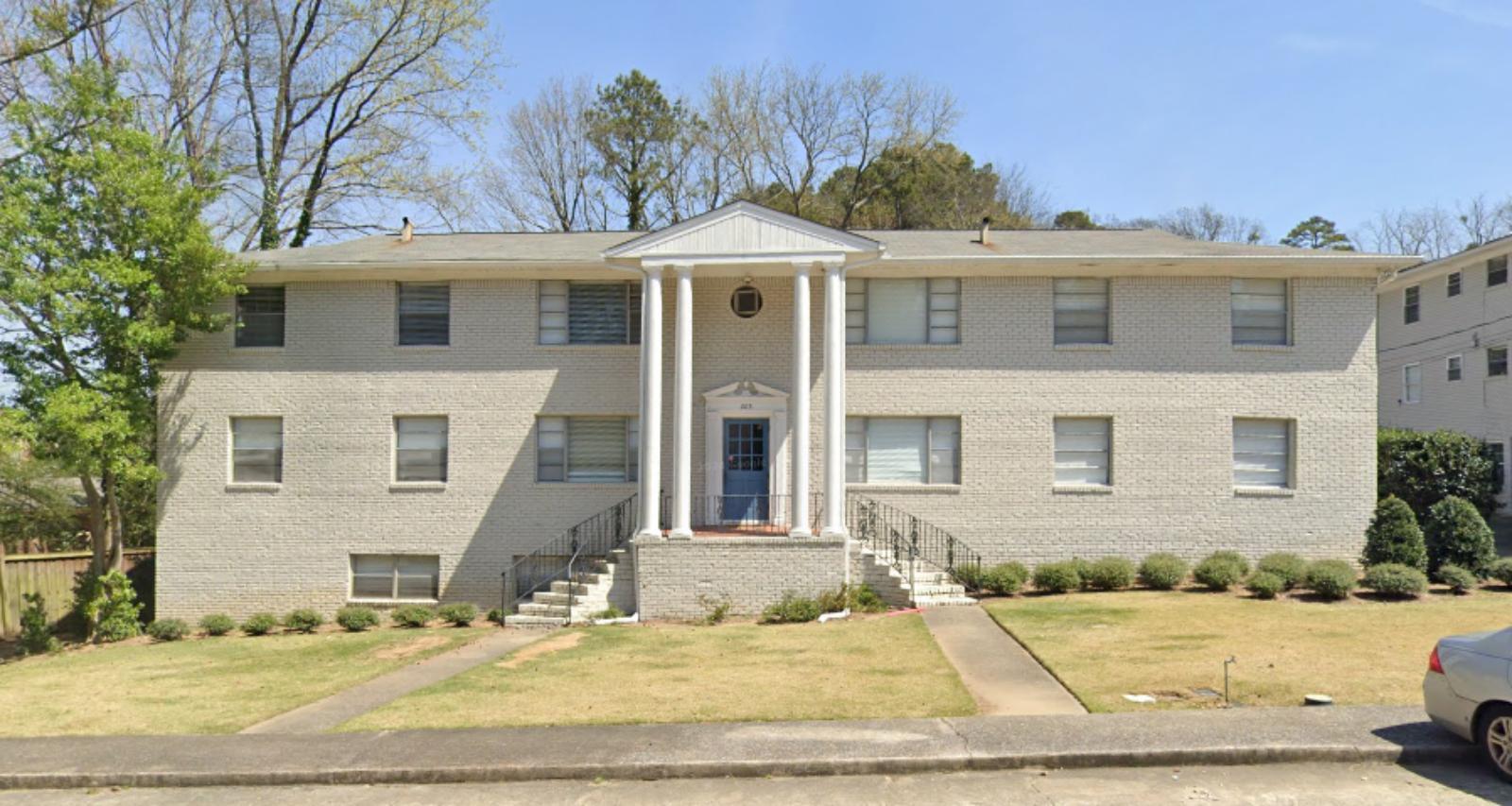
Vestavia Hills ranks among the most expensive towns in Alabama, with median home prices exceeding $540,000 in early 2025. It’s certainly polished—tree-lined streets, upscale boutiques, and top-rated schools. But all that polish comes at a price that many locals say is no longer justified by what you actually get in return.
Property taxes are steep, infrastructure investment is uneven, and diversity of housing stock is shrinking. For younger buyers and downsizing retirees, options are slim and often unaffordable. Vestavia’s prestige remains, but so do growing questions about its real value for money.
Vestavia Hills – Luxury 84.74 vs. Lifestyle 64.97
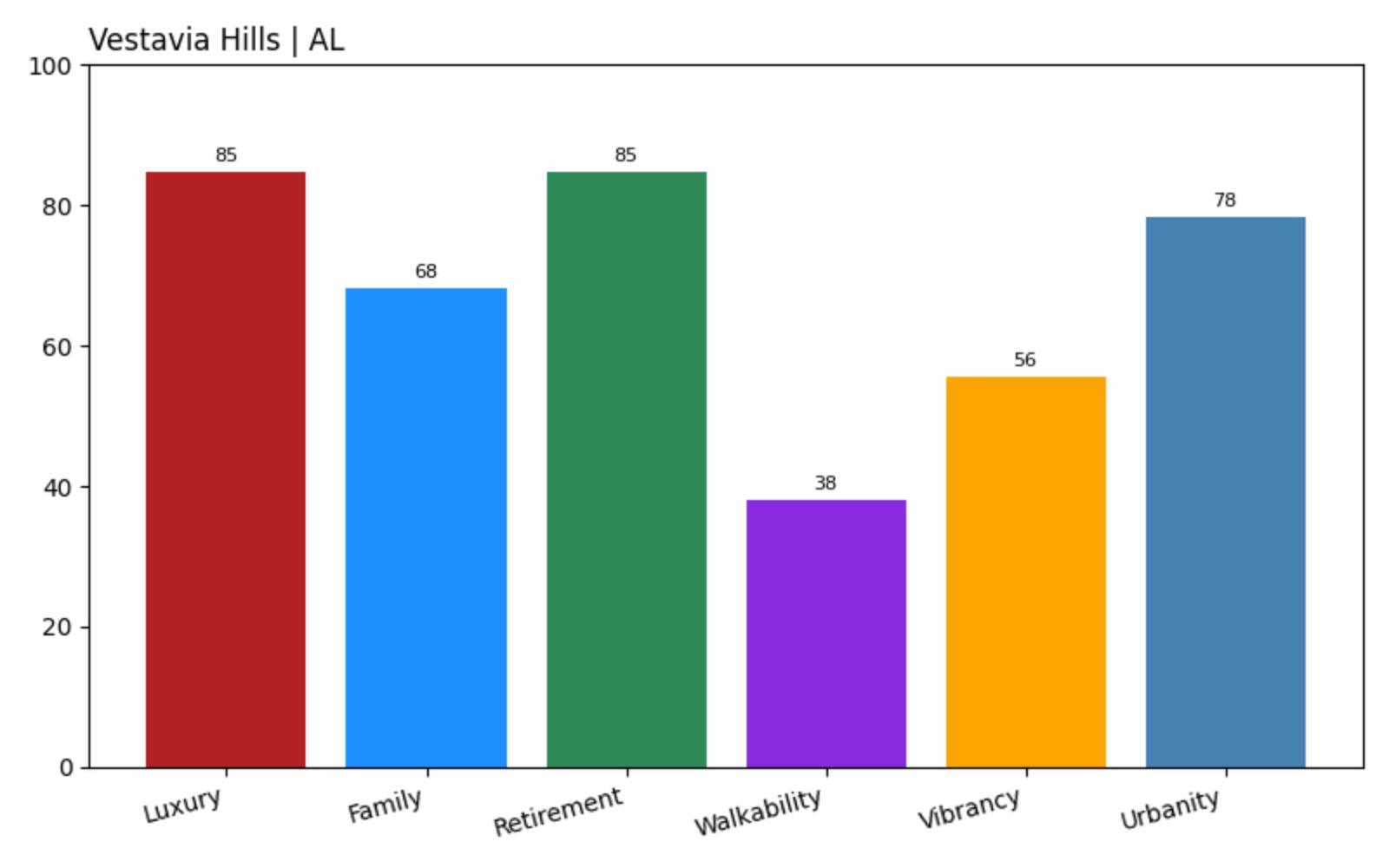
- Luxury Score: 84.74
- Family Friendliness: 68.12
- Retirement Friendliness: 84.75
- Walkability: 38.04
- Vibrancy: 55.53
- Urban Sophistication: 78.41
It still performs well on the scoreboard, but prices continue to outpace what the average buyer can truly enjoy. You’re paying for the brand, not always the lifestyle.
11. Spanish Fort – Glitzy on Paper, Grim on Foot
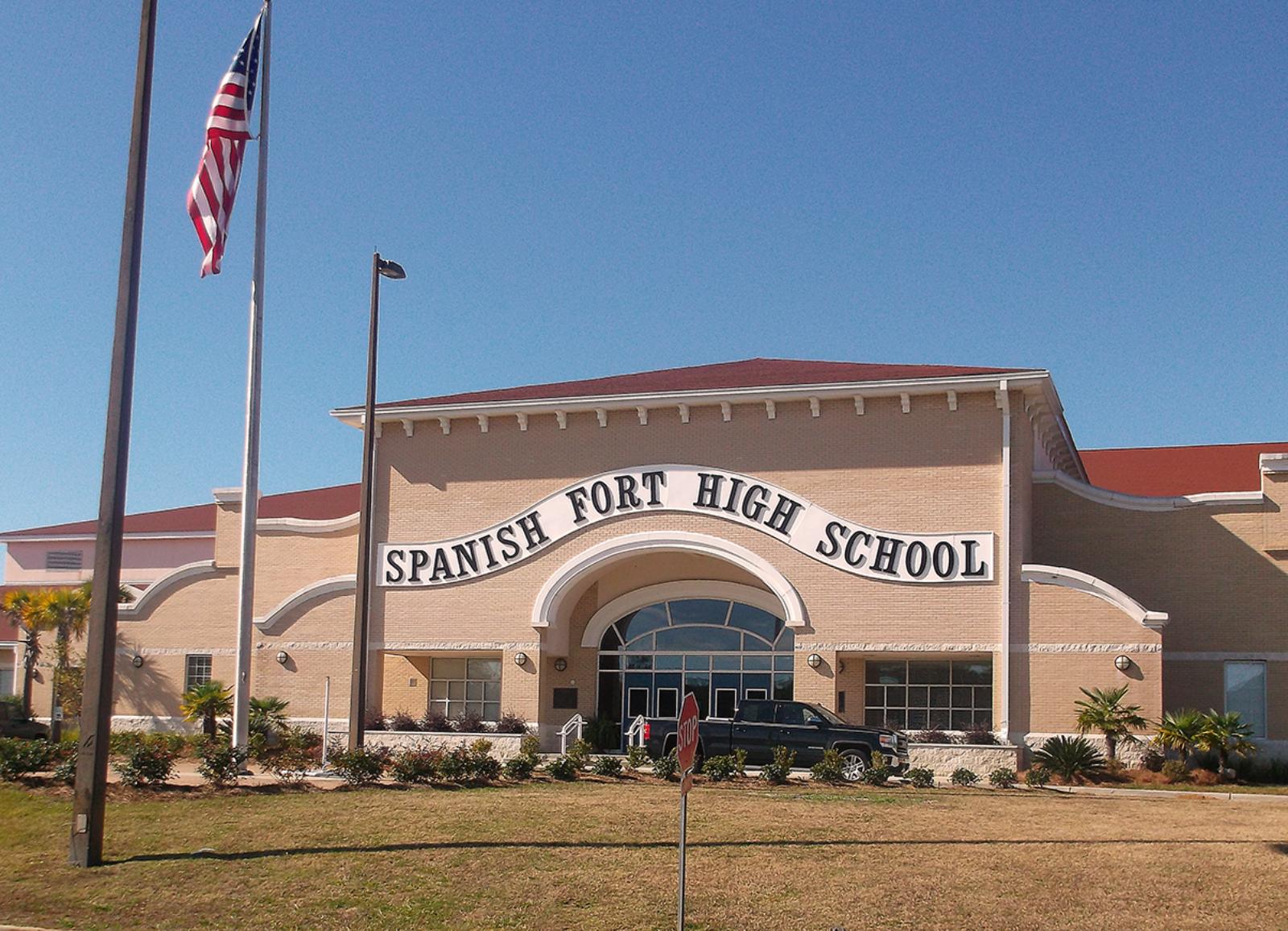
Spanish Fort is perched along Mobile Bay and attracts buyers with promises of waterfront views, sleek subdivisions, and easy access to Daphne and Mobile. It’s seen a boom in real estate development, but many complain that the town’s infrastructure hasn’t kept up with its luxury image. High home prices—often well over $400,000—feel out of step with the thin public transport, traffic bottlenecks, and underwhelming walkability.
The Eastern Shore Centre provides some upscale shopping, but much of the town feels like a collection of disconnected neighborhoods rather than a cohesive community. Spanish Fort may sell the luxury lifestyle, but many residents feel they’re overpaying for the packaging.
Spanish Fort – Luxury 72.33 vs. Lifestyle 50.21
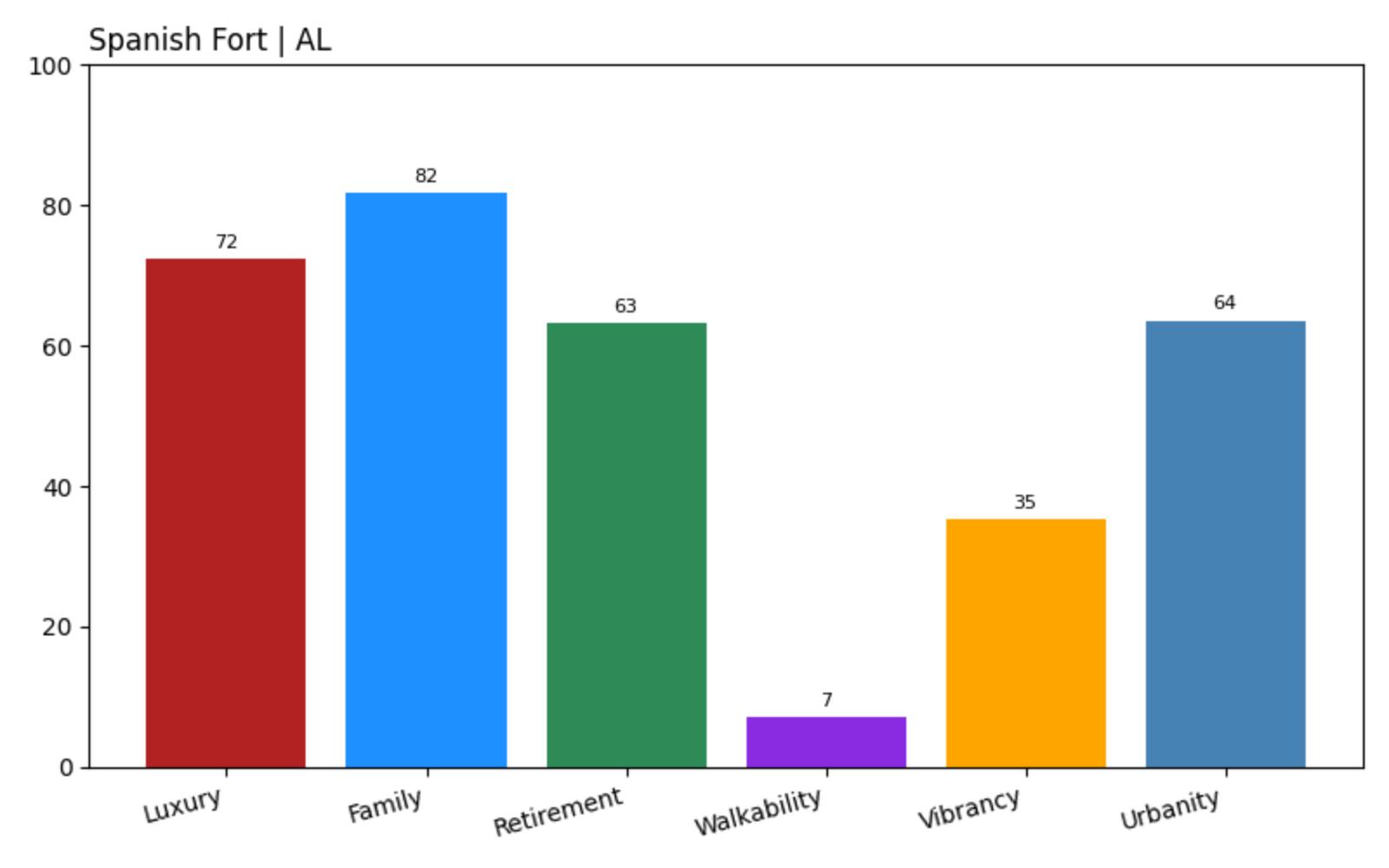
- Luxury Score: 72.33
- Family Friendliness: 81.78
- Retirement Friendliness: 63.26
- Walkability: 7.15
- Vibrancy: 35.24
- Urban Sophistication: 63.61
The low walkability score sticks out like a sore thumb. Despite strong family appeal, everyday convenience and cohesion are still lagging far behind the luxury price tag.
10. Meridianville – Premium Pricing, Patchy Payoff
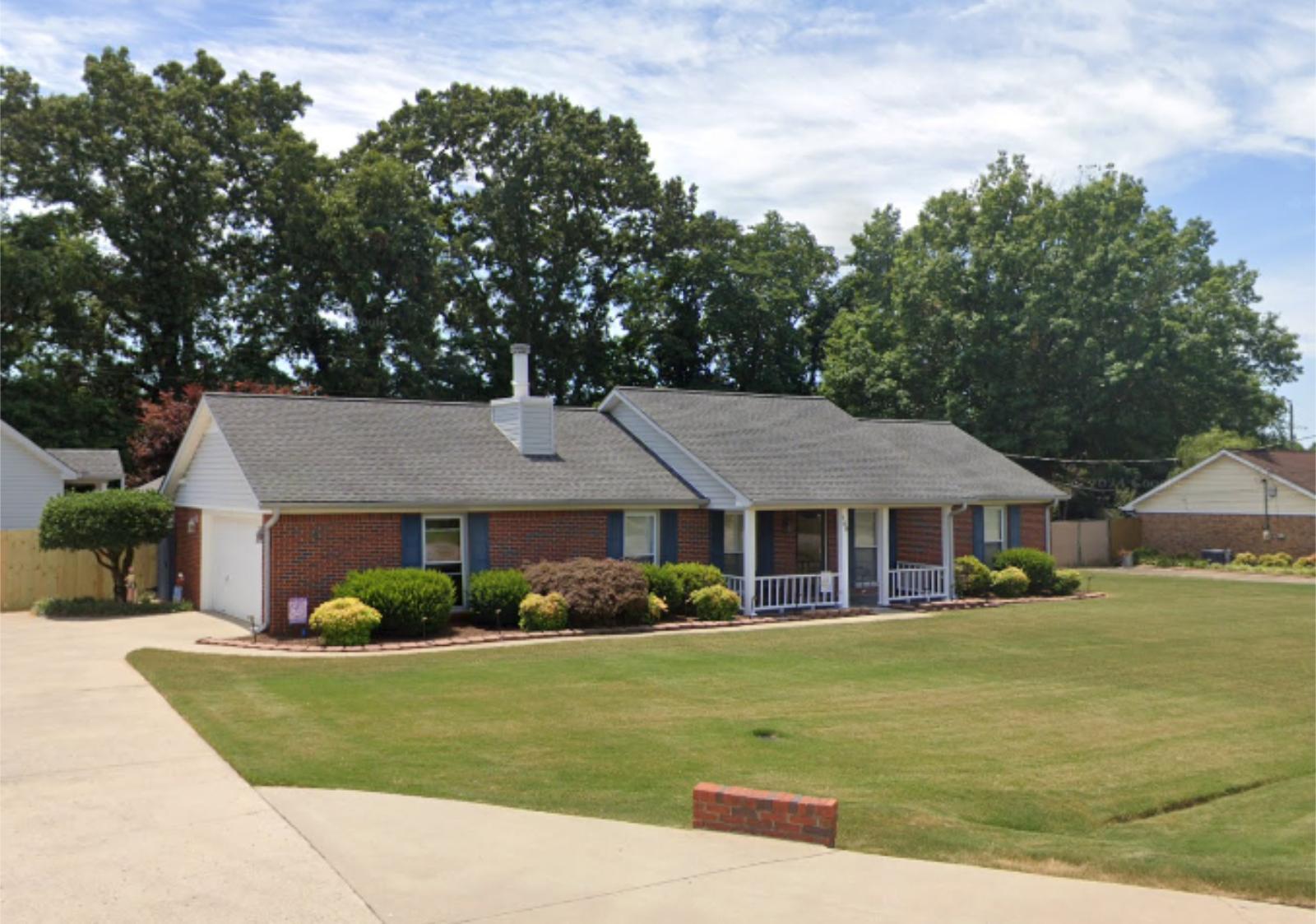
Meridianville is one of Huntsville’s fastest-growing suburbs, drawing in high-income commuters with promises of luxury homes and quiet living. But for all its new construction, the town still lacks many essentials that justify the cost. Home prices in 2025 routinely exceed $350,000, yet there’s no true town center, and basic errands often require a drive to Hazel Green or Huntsville proper.
The appeal is clear for families wanting newer homes and decent schools, but the town’s low vibrancy and limited walkability undercut its luxury image. It’s a case of style over substance—great if you don’t mind driving everywhere, less ideal if you’re looking for day-to-day convenience and community character.
Meridianville – Luxury 70.12 vs. Lifestyle 46.35
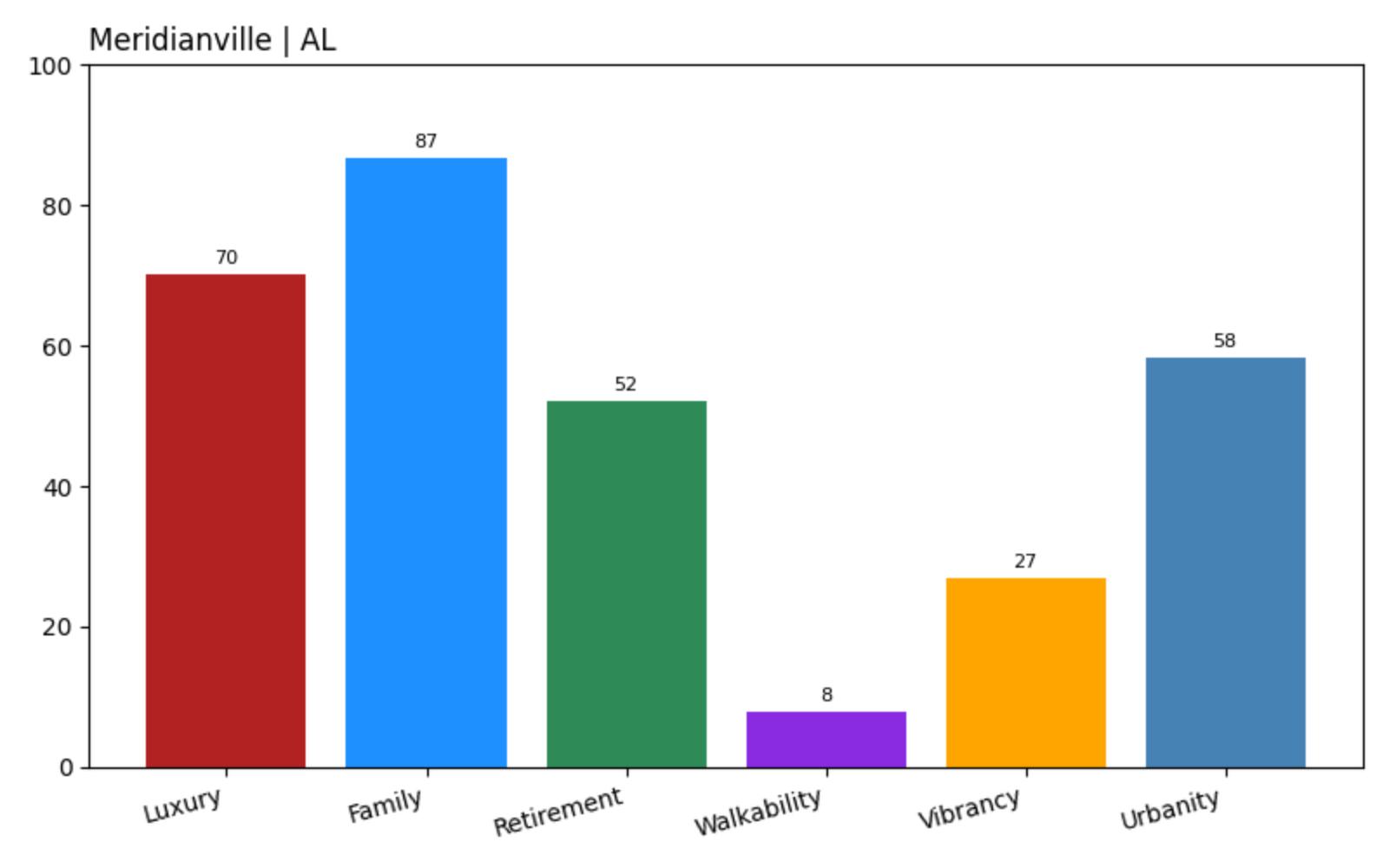
- Luxury Score: 70.12
- Family Friendliness: 86.69
- Retirement Friendliness: 52.17
- Walkability: 7.86
- Vibrancy: 26.83
- Urban Sophistication: 58.18
Strong family-friendliness props up the numbers, but low walkability and vibrancy tell a different story. It’s a neighborhood with luxury curb appeal—but a lifestyle that runs mostly on autopilot.
9. Harvest – New Builds, Familiar Shortcomings
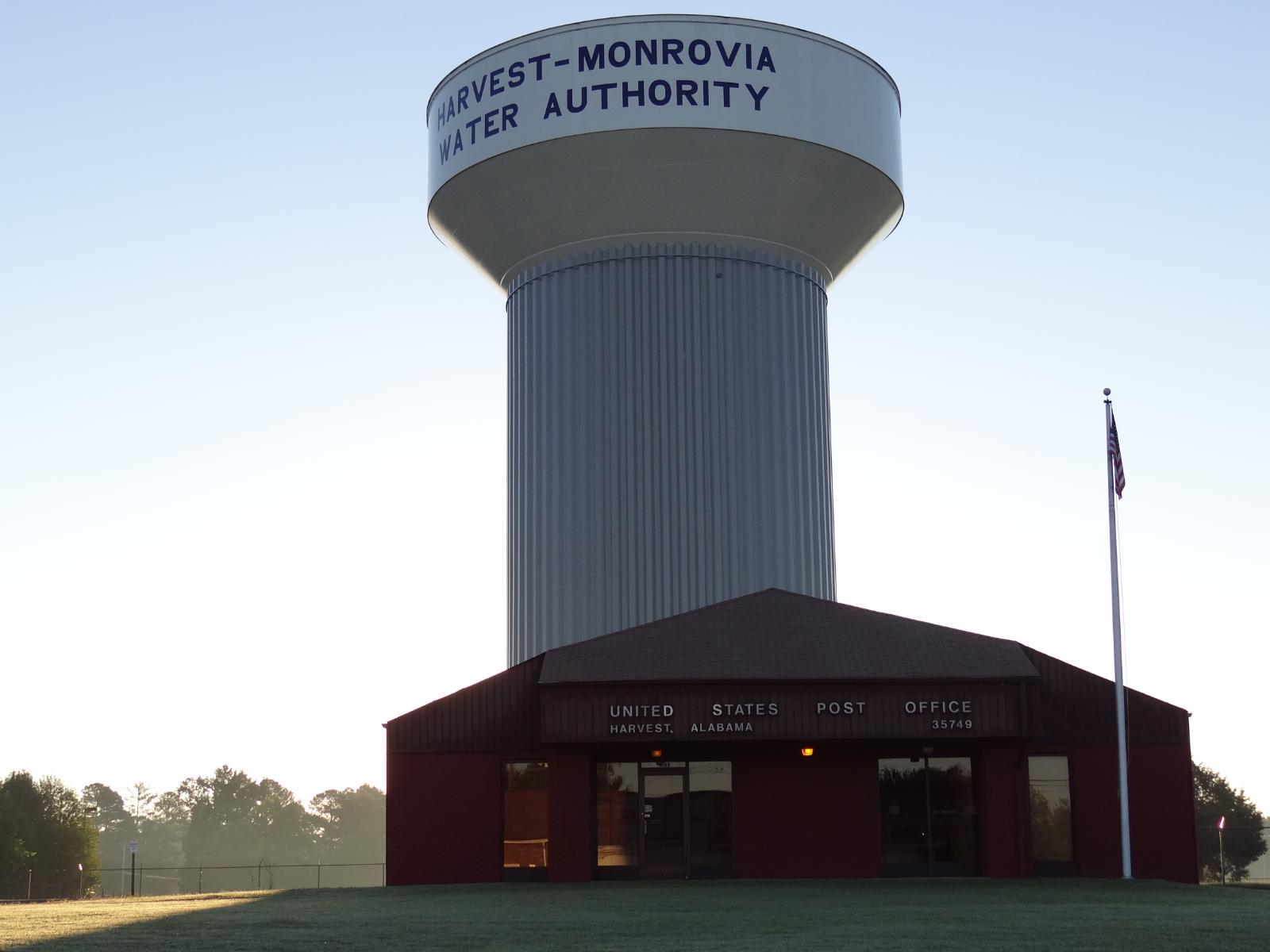
Harvest lies just northwest of Huntsville and has become a magnet for upscale subdivisions and master-planned communities. But the rapid growth has outpaced local infrastructure. Despite median listing prices topping $375,000 in 2025, many neighborhoods lack nearby grocery stores, parks, or medical offices.
Families are lured by modern layouts and large lots, but public services and amenities are still catching up. Sidewalks remain a rarity, and many roads feel semi-rural despite the town’s growing size. Harvest looks polished in real estate photos—but lifestyle conveniences often lag miles behind.
Harvest – Luxury 72.08 vs. Lifestyle 48.1
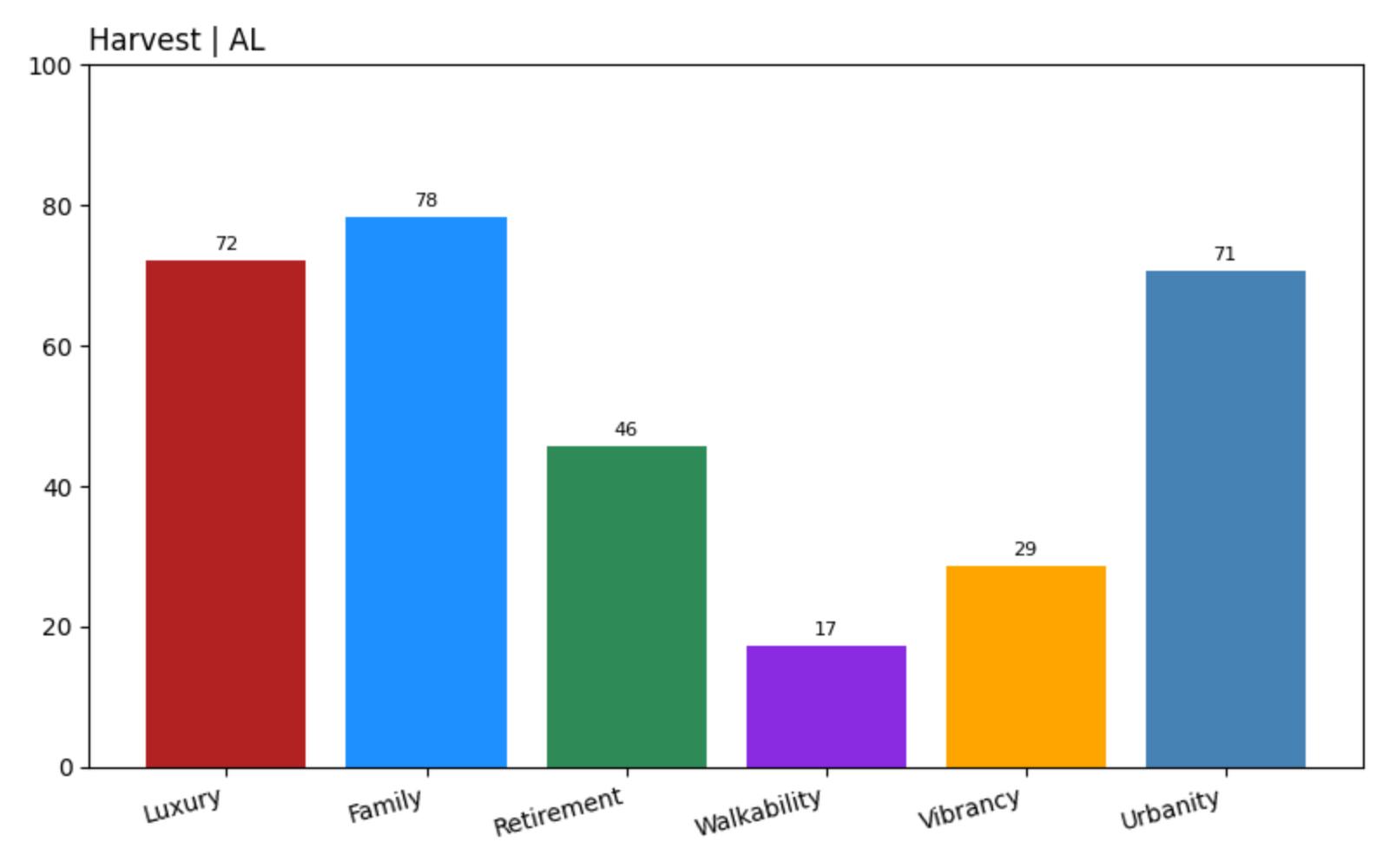
- Luxury Score: 72.08
- Family Friendliness: 78.25
- Retirement Friendliness: 45.73
- Walkability: 17.35
- Vibrancy: 28.54
- Urban Sophistication: 70.64
The scores reinforce the narrative: high-end design with underwhelming access. Harvest offers comfort and quiet—but not the kind of full-service lifestyle its prices suggest.
8. Trussville – Stretched Budgets, Stiff Traffic
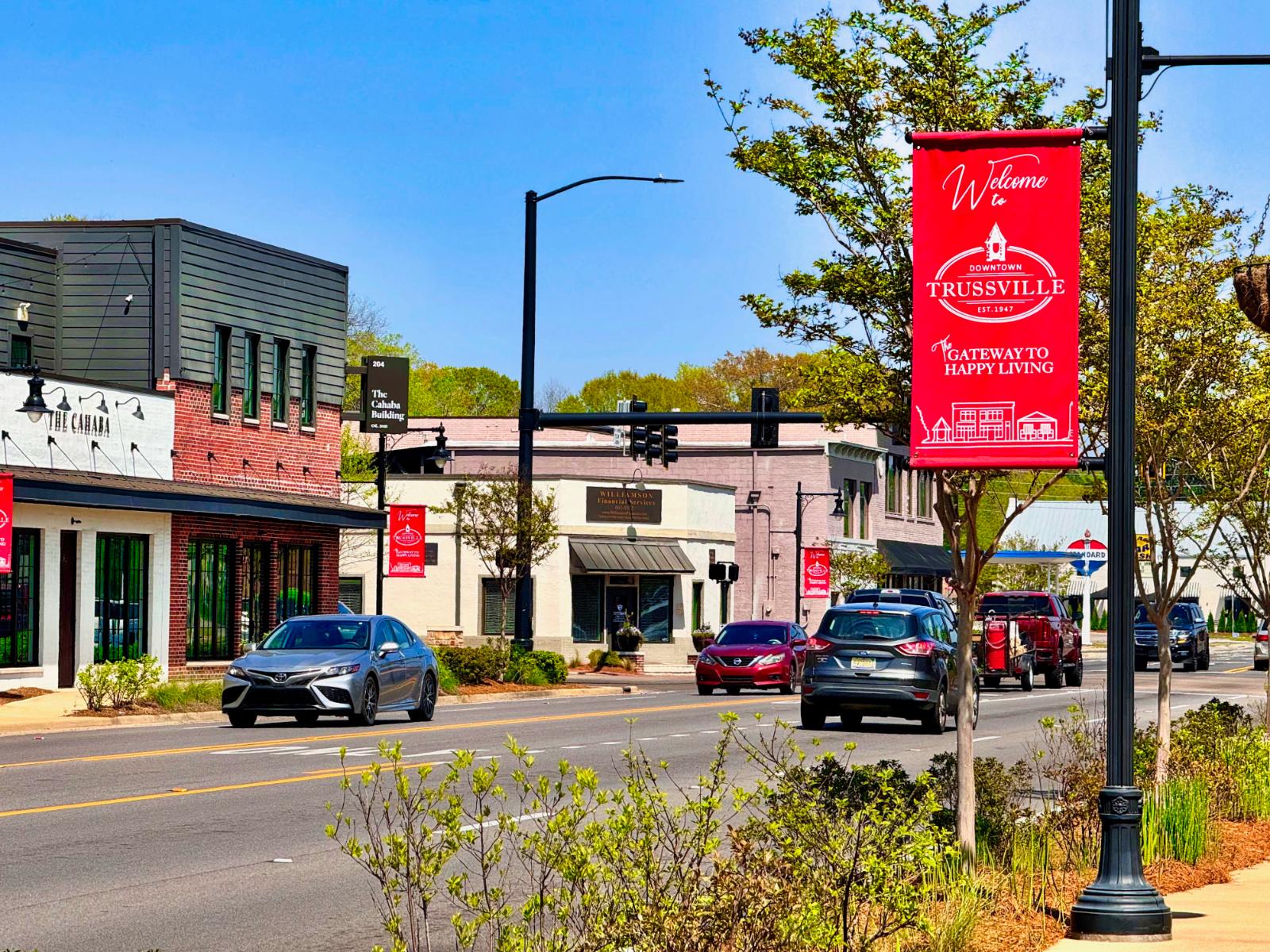
Trussville is a northeastern Birmingham suburb known for its schools and well-kept homes. But as its popularity has risen, so have home prices—median listings climbed past $430,000 in 2025. With growth comes congestion, and many locals now complain of worsening traffic, crowded schools, and rising utility bills.
New retail developments have cropped up, but many feel cookie-cutter and lacking in character. While Trussville still checks plenty of boxes for buyers, the cost of living keeps climbing—and it’s no longer clear whether that extra spend delivers real returns beyond a zip code.
Trussville – Luxury 70.96 vs. Lifestyle 55.86
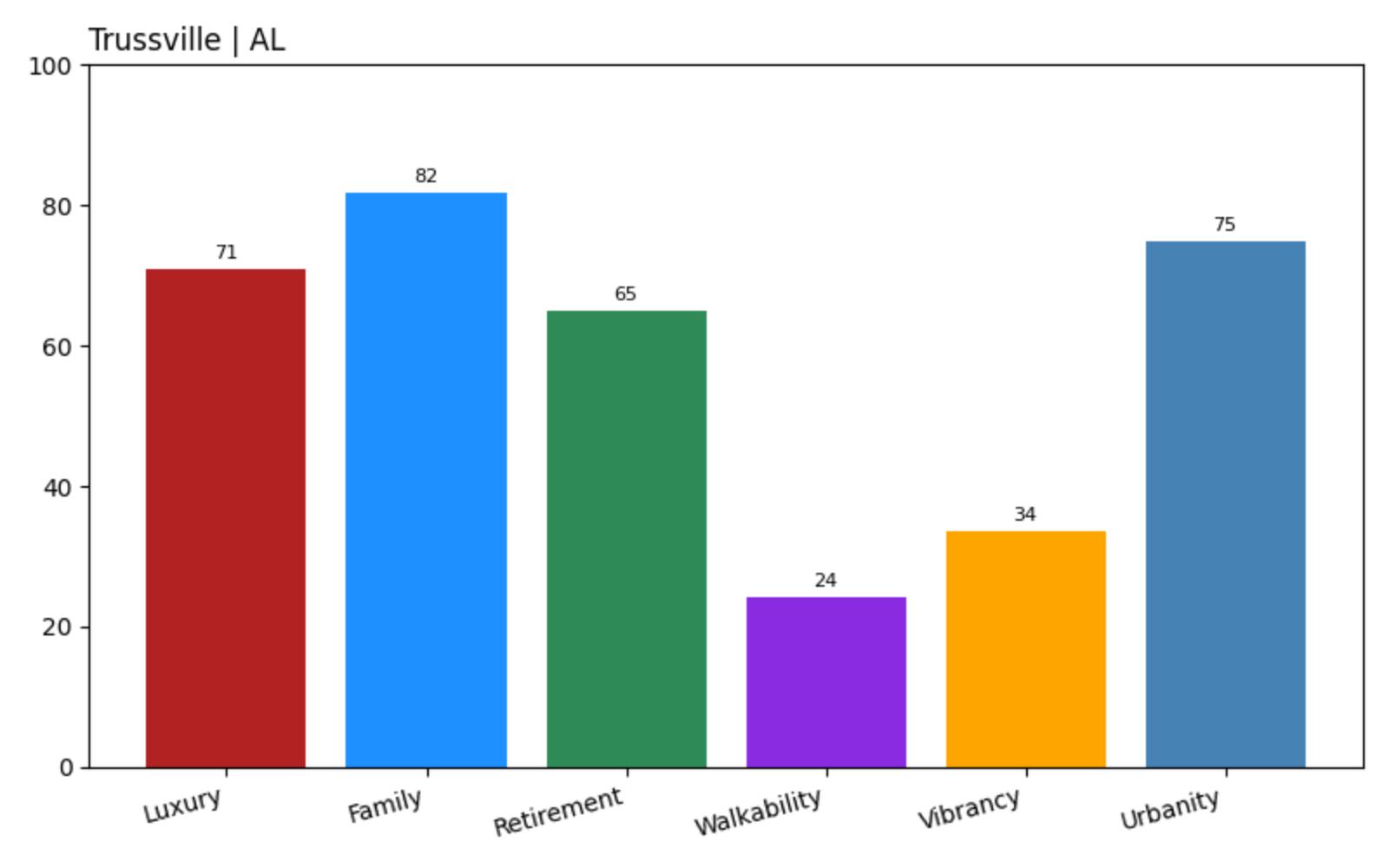
- Luxury Score: 70.96
- Family Friendliness: 81.72
- Retirement Friendliness: 65.04
- Walkability: 24.24
- Vibrancy: 33.56
- Urban Sophistication: 74.77
Family-friendly and polished, yes—but the experience doesn’t always match the hype. If you’re not using every amenity, you might wonder what you’re paying for.
7. Alabaster – Sprawling Growth, Shrinking Appeal

Alabaster is one of Shelby County’s largest cities, yet the lifestyle it offers feels increasingly stretched. Home prices now sit near $340,000—well above the state average—thanks to rapid development and a booming population. But many areas still lack walkable centers or cohesive planning, and residents are starting to notice.
Big-box retail dominates, parks are scattered, and the downtown revival hasn’t quite taken hold. Alabaster is packed with promise, but some buyers are beginning to look elsewhere as quality-of-life gaps widen behind the price tags.
Alabaster – Luxury 67.74 vs. Lifestyle 52.61
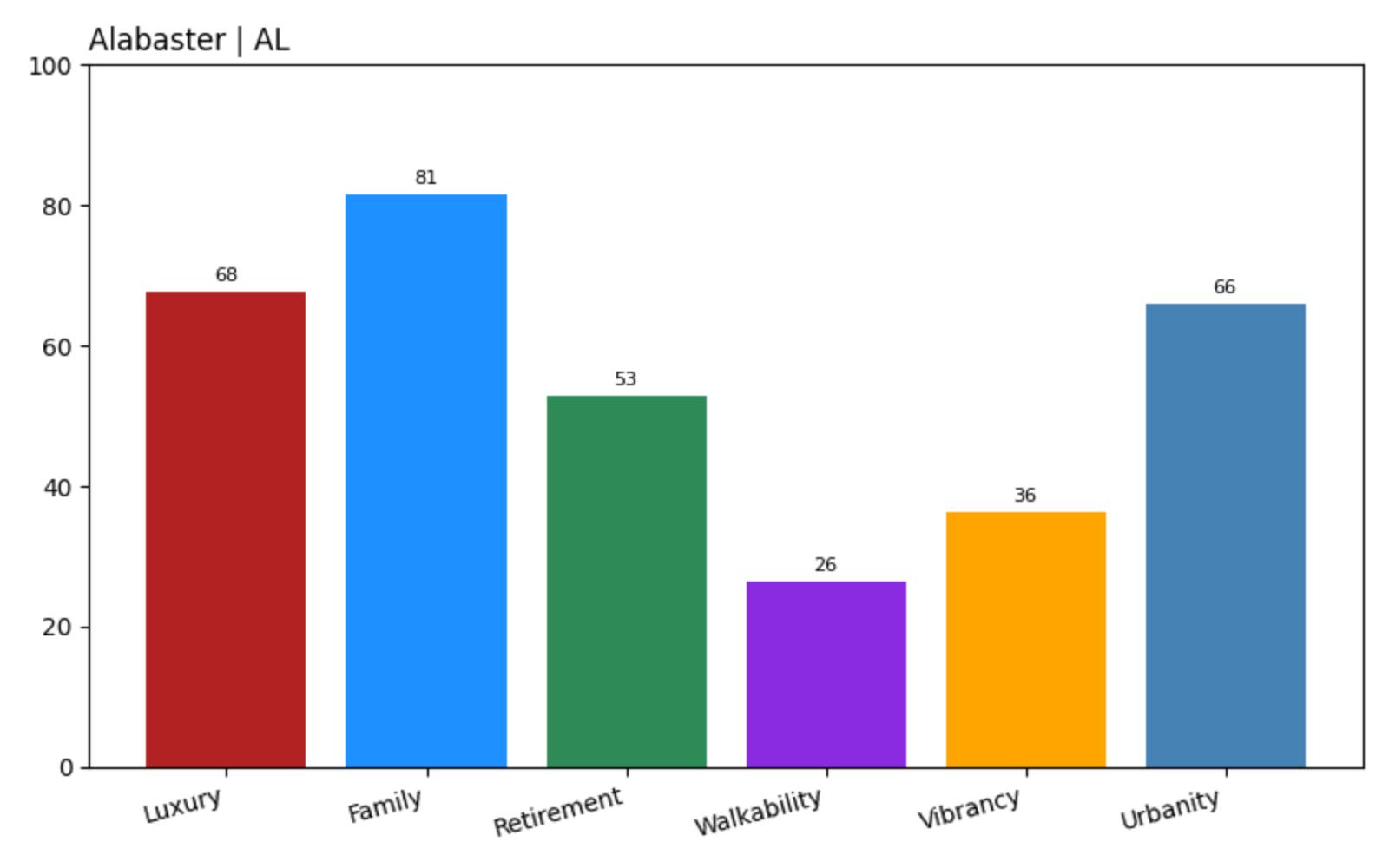
- Luxury Score: 67.74
- Family Friendliness: 81.42
- Retirement Friendliness: 52.93
- Walkability: 26.37
- Vibrancy: 36.35
- Urban Sophistication: 65.97
Walkability and vibrancy are middling at best. Alabaster may check the suburban boxes, but it’s starting to feel more bloated than balanced.
6. Helena – High Praise, Higher Prices
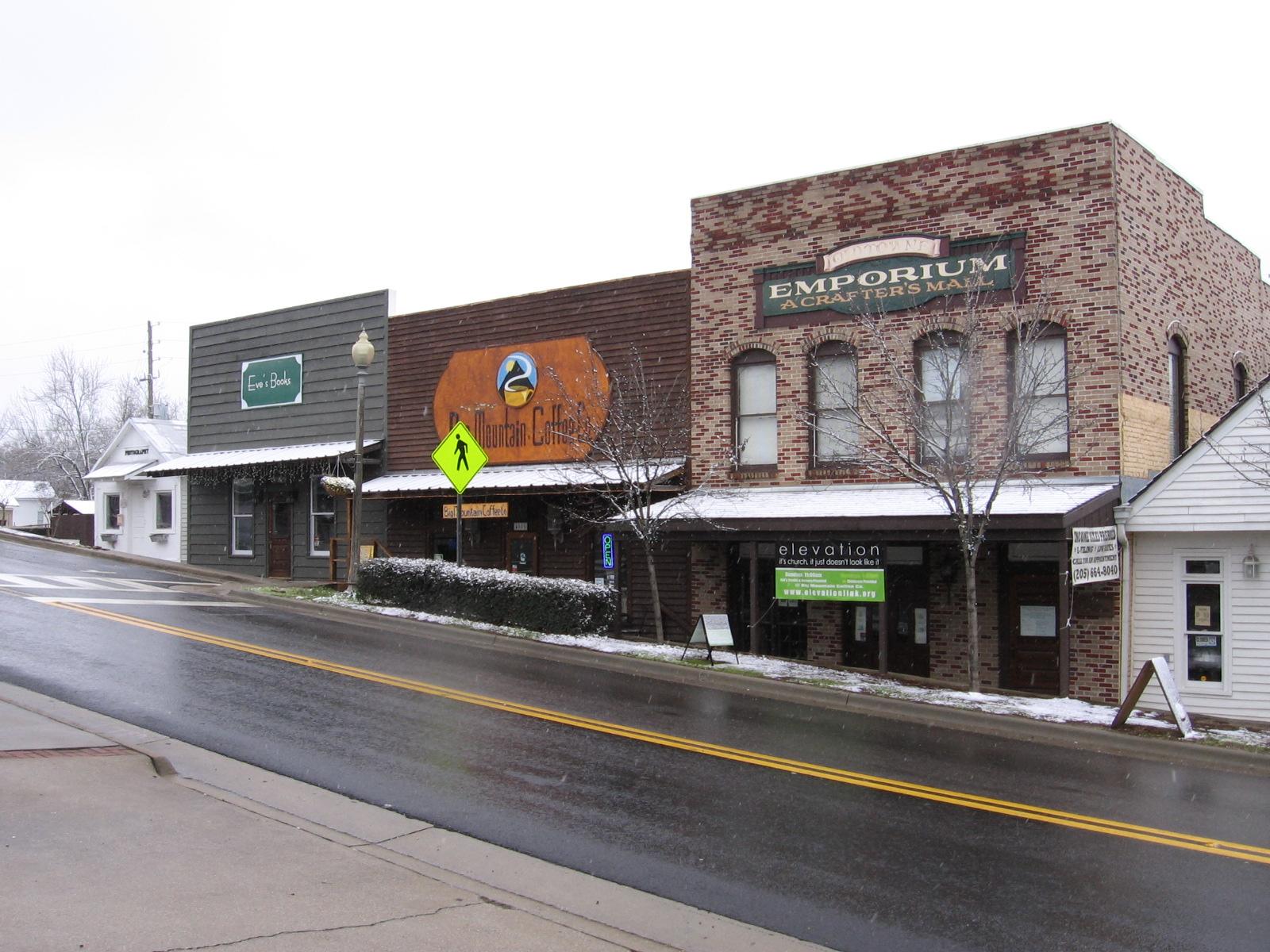
Helena has a loyal following—residents often praise its schools, safety, and scenic surroundings. But in 2025, the average home now costs more than $420,000, and that’s made the town less accessible for first-time buyers and downsizers alike. Property taxes are steep, and newer subdivisions have been slow to add essential services like grocery stores or medical clinics.
The charm is still there, but it’s fading behind a curtain of rising costs. Unless you’re already rooted here, Helena can feel less like a smart investment and more like a stretched one.
Helena – Luxury 80.01 vs. Lifestyle 58.09
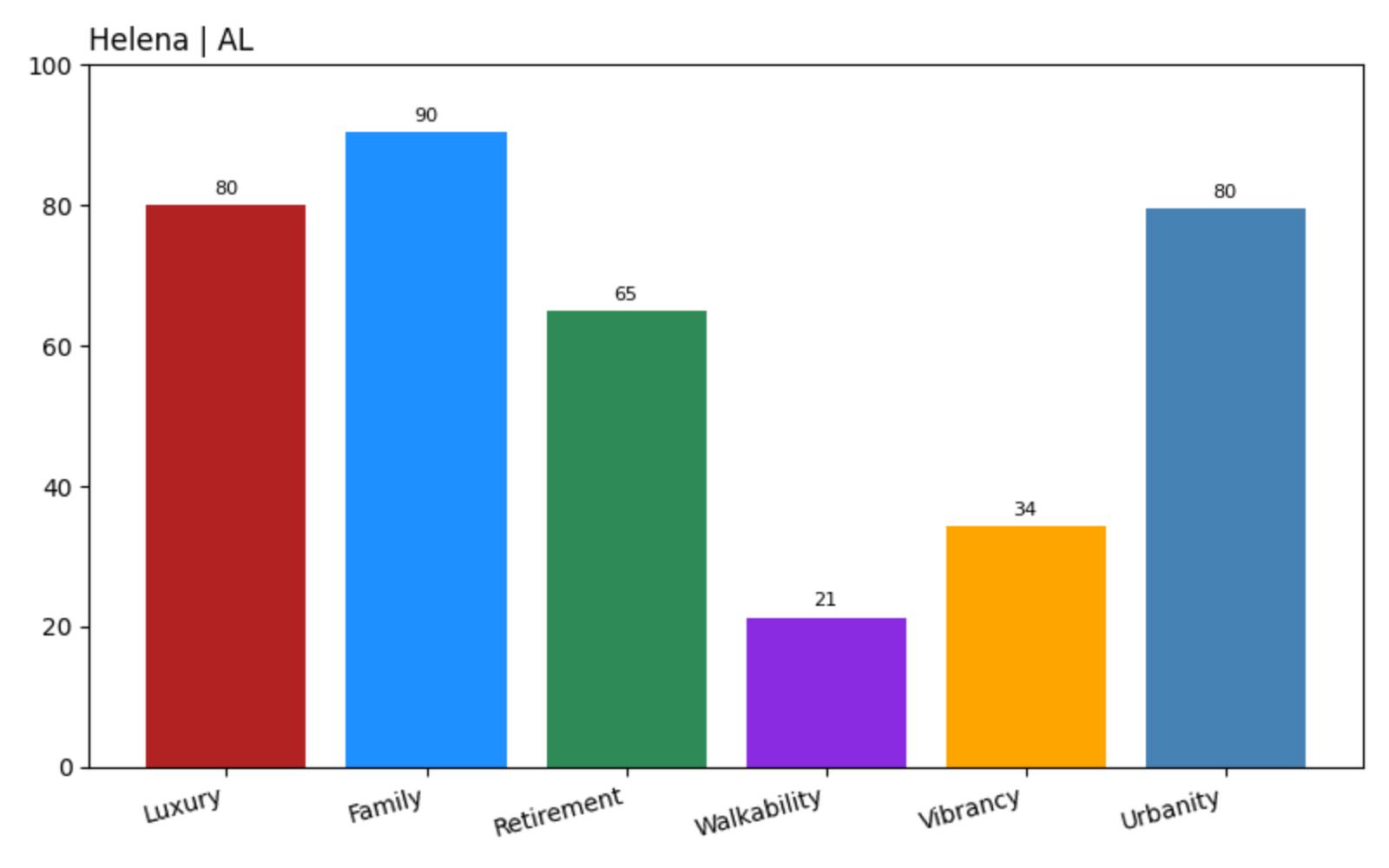
- Luxury Score: 80.01
- Family Friendliness: 90.42
- Retirement Friendliness: 64.86
- Walkability: 21.34
- Vibrancy: 34.30
- Urban Sophistication: 79.52
The numbers suggest strength, but lifestyle gaps are creeping in. For the price, buyers now expect more than just good schools—they want walkable perks, too.
5. Madison – Tech Hub, Tiring Price Tag
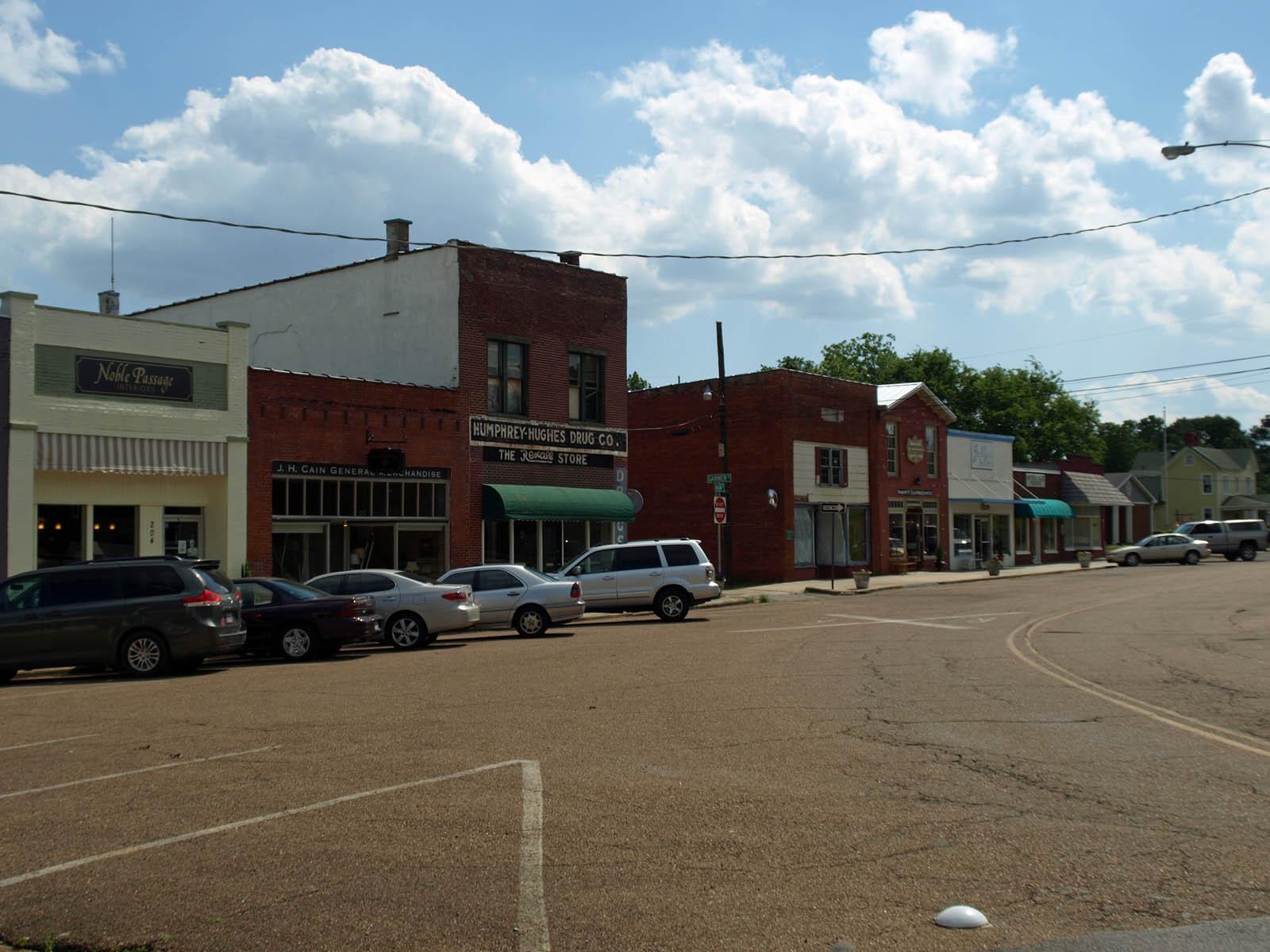
Madison has exploded in popularity over the past decade, thanks to its proximity to Huntsville’s tech corridor and reputation for great schools. But that reputation comes at a cost—home prices are now brushing past $470,000 on average in 2025. For newcomers, sticker shock hits fast, especially as property taxes, HOA fees, and rising utility costs stack up.
There’s a lot to love: greenways, retail centers, and well-maintained parks. But rapid expansion has also brought traffic, overcrowded schools, and strained services. What once felt like a value-packed suburb is starting to feel overbuilt and overpriced, especially for families without dual high incomes.
Madison – Luxury 83.76 vs. Lifestyle 58.55
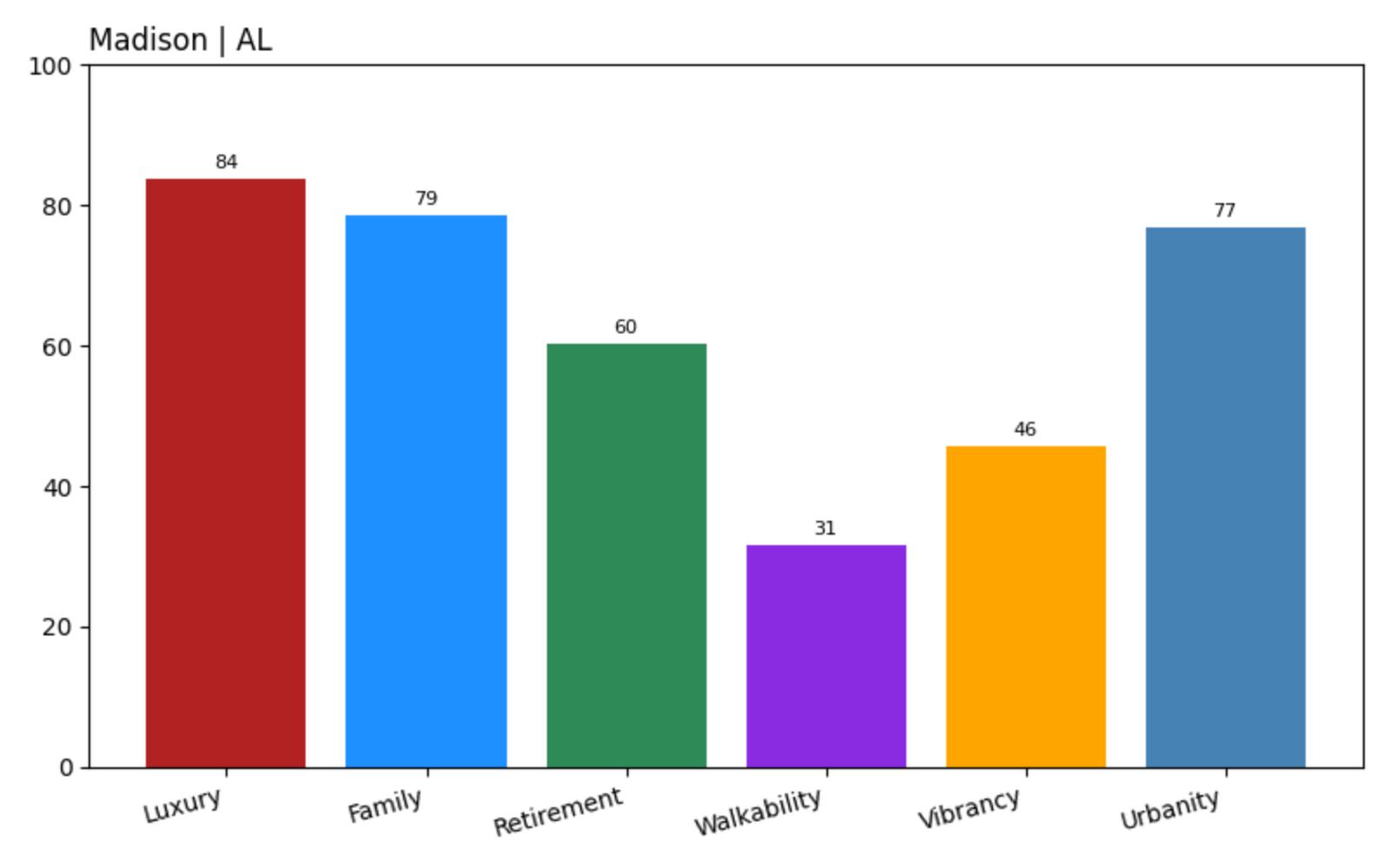
- Luxury Score: 83.76
- Family Friendliness: 78.67
- Retirement Friendliness: 60.18
- Walkability: 31.49
- Vibrancy: 45.60
- Urban Sophistication: 76.84
The numbers suggest a well-rounded town, but the price tag is rising faster than the perks. Buyers hoping for big-city amenities without the stress might be disappointed by just how much Madison now demands.
4. Pike Road – Prestige Without Practicality
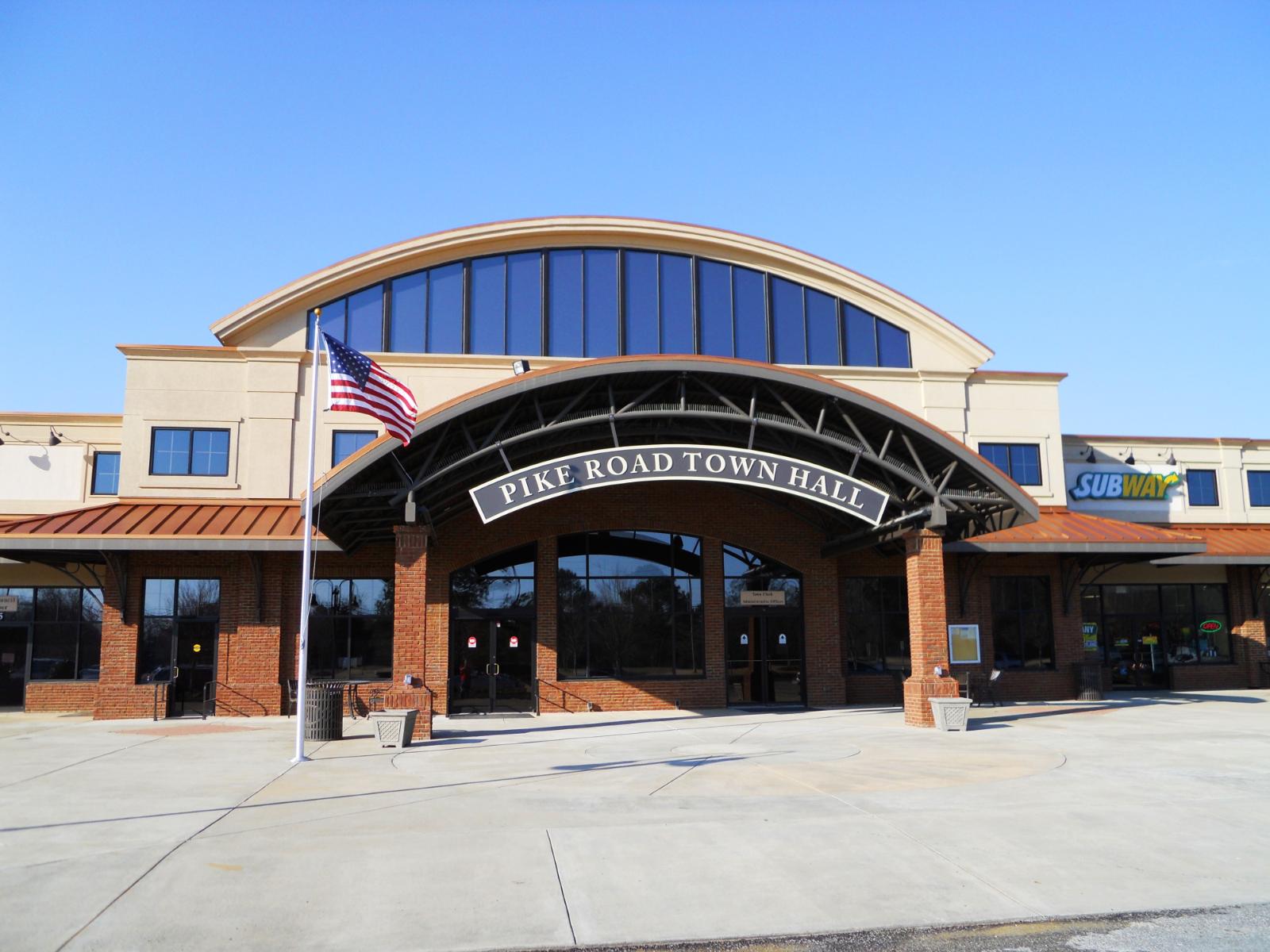
Pike Road is an affluent suburb of Montgomery that promises exclusivity and elegance. But behind the manicured lawns and upscale subdivisions, the lifestyle may feel surprisingly thin. In 2025, average home prices hover around $475,000, and yet amenities remain limited—most errands require a 20–30 minute drive to East Montgomery.
While schools perform well and neighborhoods are safe, the town lacks a walkable core, diverse retail, or cultural life. Residents buy in for peace and prestige—but find themselves driving, commuting, or outsourcing more of their daily life than expected. It’s polished on the outside, but light on substance.
Pike Road – Luxury 82.64 vs. Lifestyle 51.54
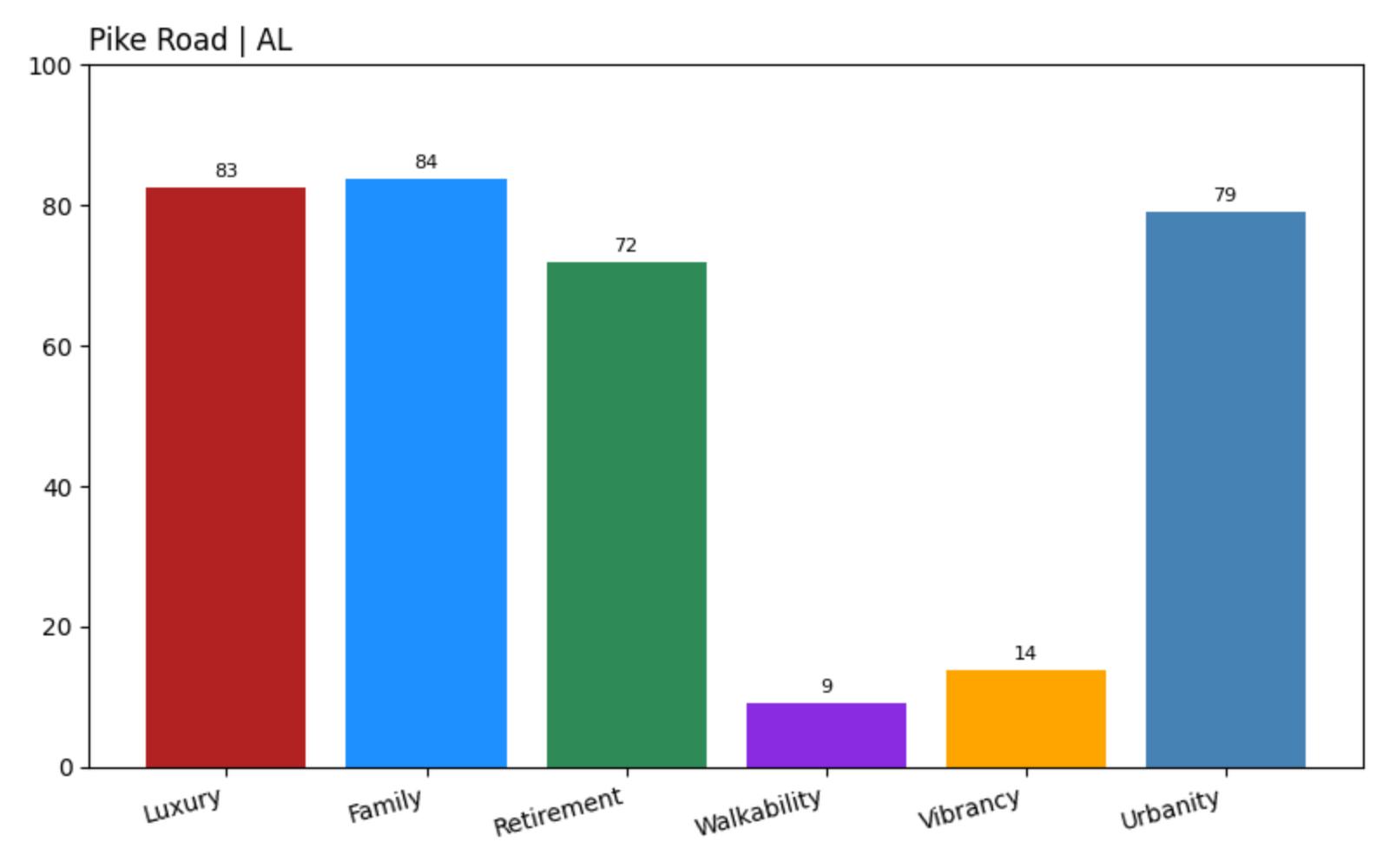
- Luxury Score: 82.64
- Family Friendliness: 83.81
- Retirement Friendliness: 71.97
- Walkability: 8.98
- Vibrancy: 13.90
- Urban Sophistication: 79.04
Great for families seeking quiet, but low walkability and vibrancy show the daily trade-offs. The cost-to-lifestyle equation doesn’t always add up for younger professionals or singles.
3. Fort Rucker – Military Prestige, Civilian Limitations
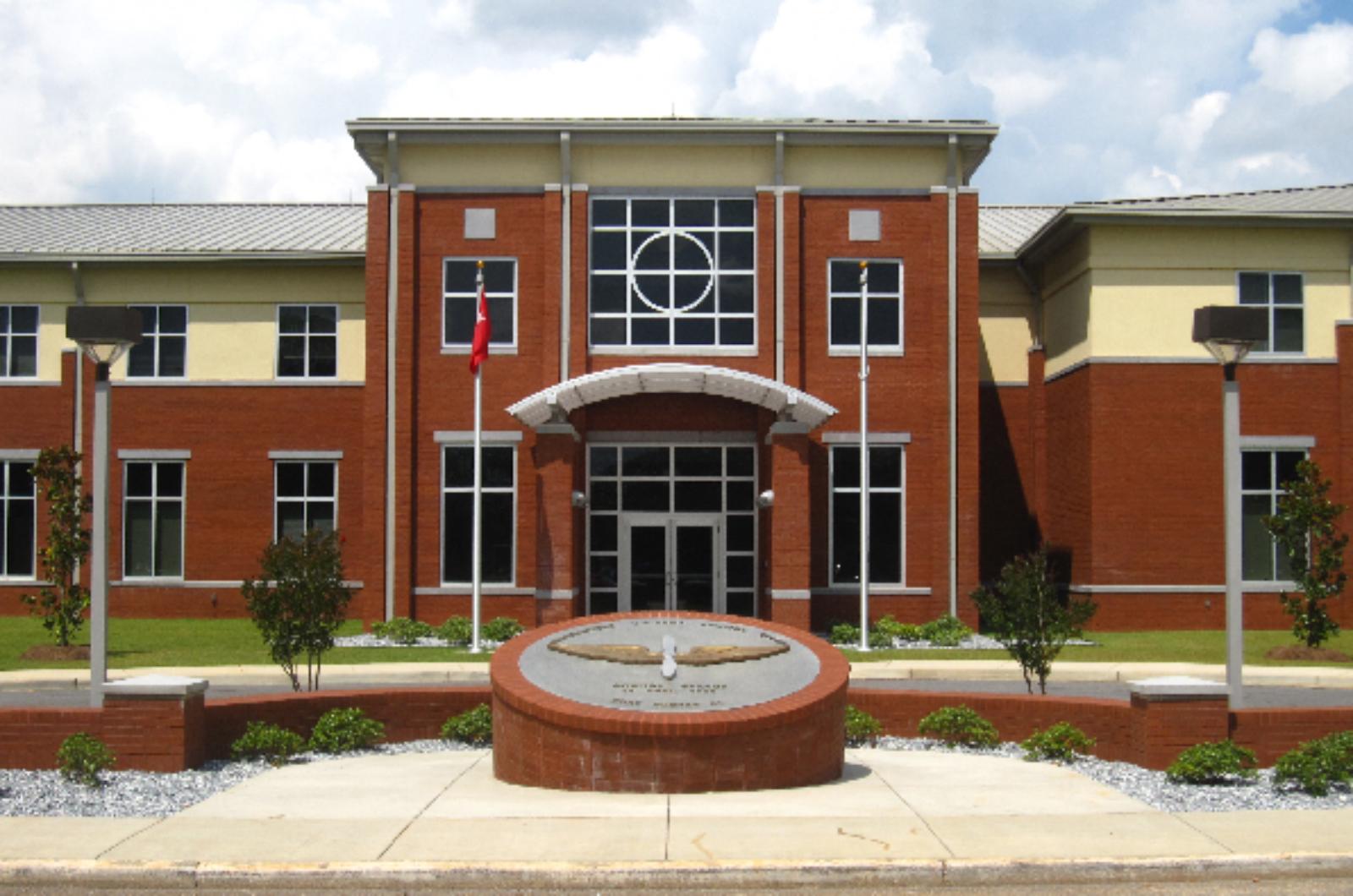
Fort Rucker, now formally named Fort Novosel, is best known as the heart of Army aviation training. While the base itself offers solid facilities for service members, surrounding areas marketed as “luxury” often feel like a mismatch for civilian buyers. Homes priced over $300,000 are common, even though off-base infrastructure and lifestyle options are limited.
Outside of military life, access to high-end amenities is slim. Shopping is sparse, entertainment is limited, and public schools rate unevenly. Civilian buyers expecting a high-end Southern lifestyle may end up wondering where their money went.
Fort Rucker – Luxury 66.28 vs. Lifestyle 28.45
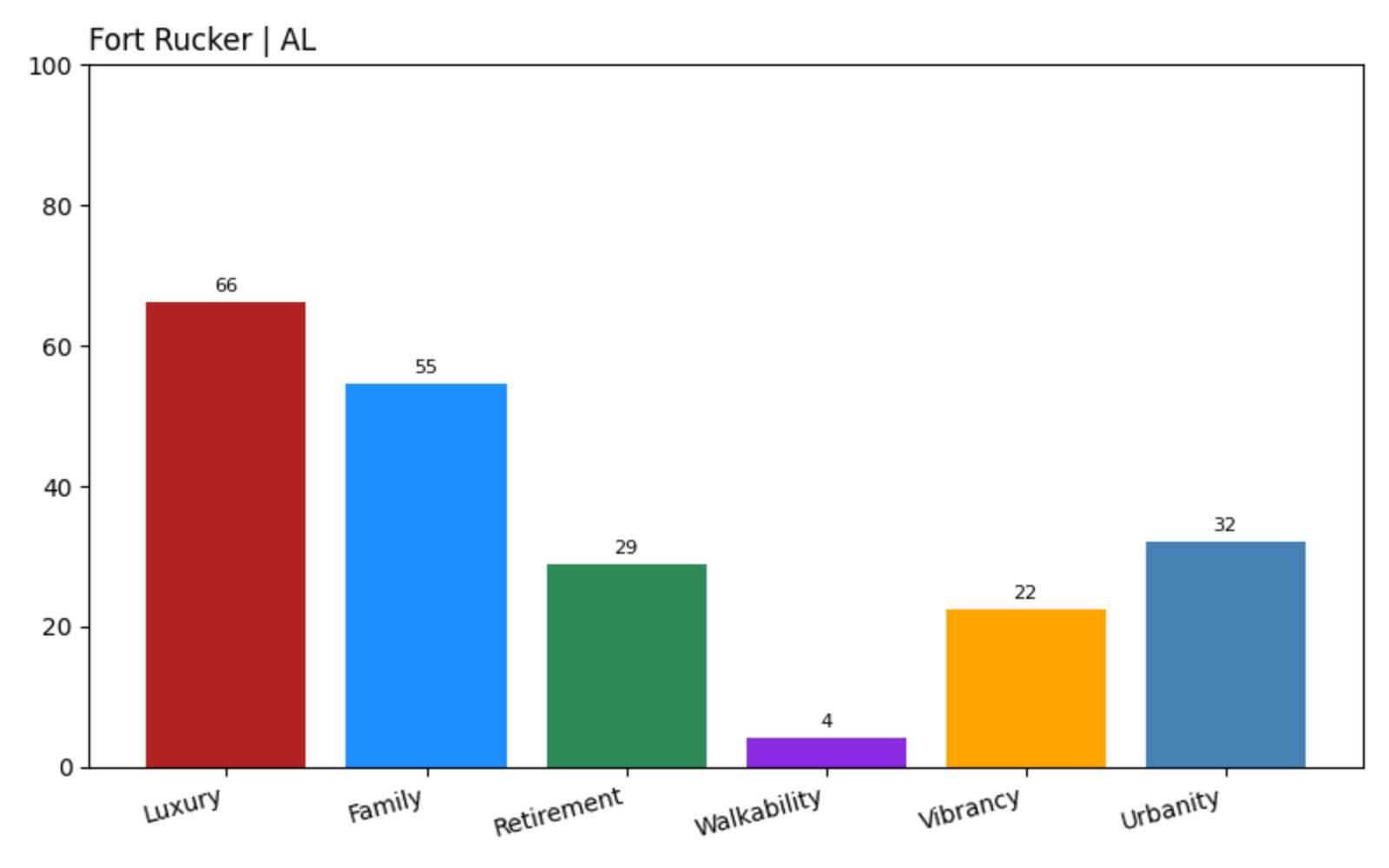
- Luxury Score: 66.28
- Family Friendliness: 54.63
- Retirement Friendliness: 28.91
- Walkability: 4.21
- Vibrancy: 22.44
- Urban Sophistication: 32.05
This is one of the clearest mismatches in the dataset. A moderate luxury score masks serious shortfalls in lifestyle, vibrancy, and walkability for civilians. Buyer beware.
2. Homewood – Pricey and Pressured
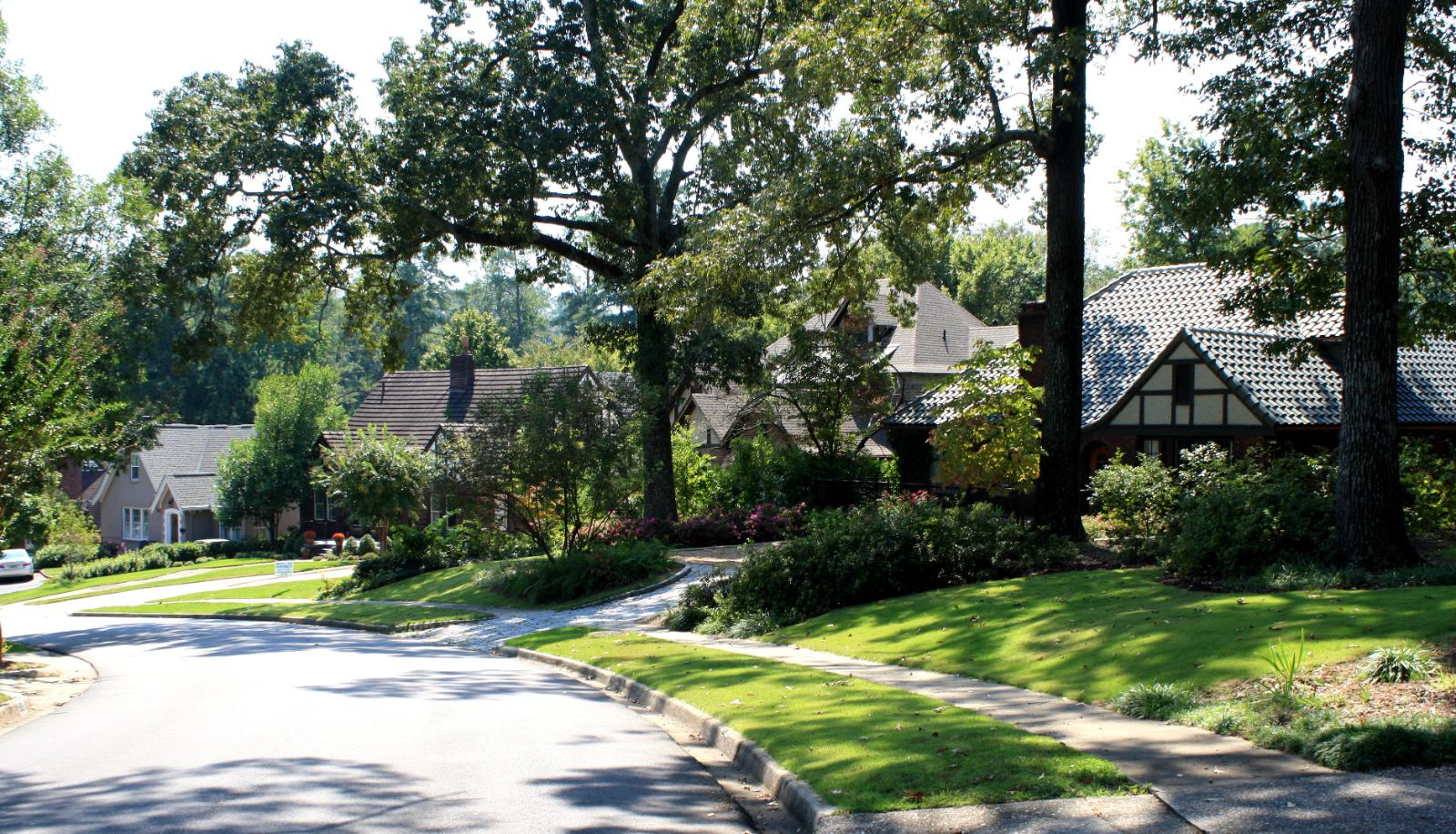
Yes, Homewood is back—again—for good reason. It’s a town that photographs beautifully and has the boutique charm that draws buyers from across the region. But its meteoric rise in home values—now well above $500,000—has outpaced what many middle-income buyers can justify.
Crowded streets, escalating property taxes, and increasing gentrification are pushing long-time residents out. The charming facade remains, but new buyers may find themselves squeezed financially just to maintain a modest lifestyle. It’s no longer the accessible haven it once was.
Homewood – Luxury 82.06 vs. Lifestyle 64.59

- Luxury Score: 82.06
- Family Friendliness: 56.46
- Retirement Friendliness: 50.19
- Walkability: 67.82
- Vibrancy: 72.91
- Urban Sophistication: 75.57
Even with strong lifestyle scores, the affordability gap makes this a luxury town that’s simply become too expensive to enjoy for many everyday buyers.
1. Mountain Brook – All That Glitters Isn’t Gold
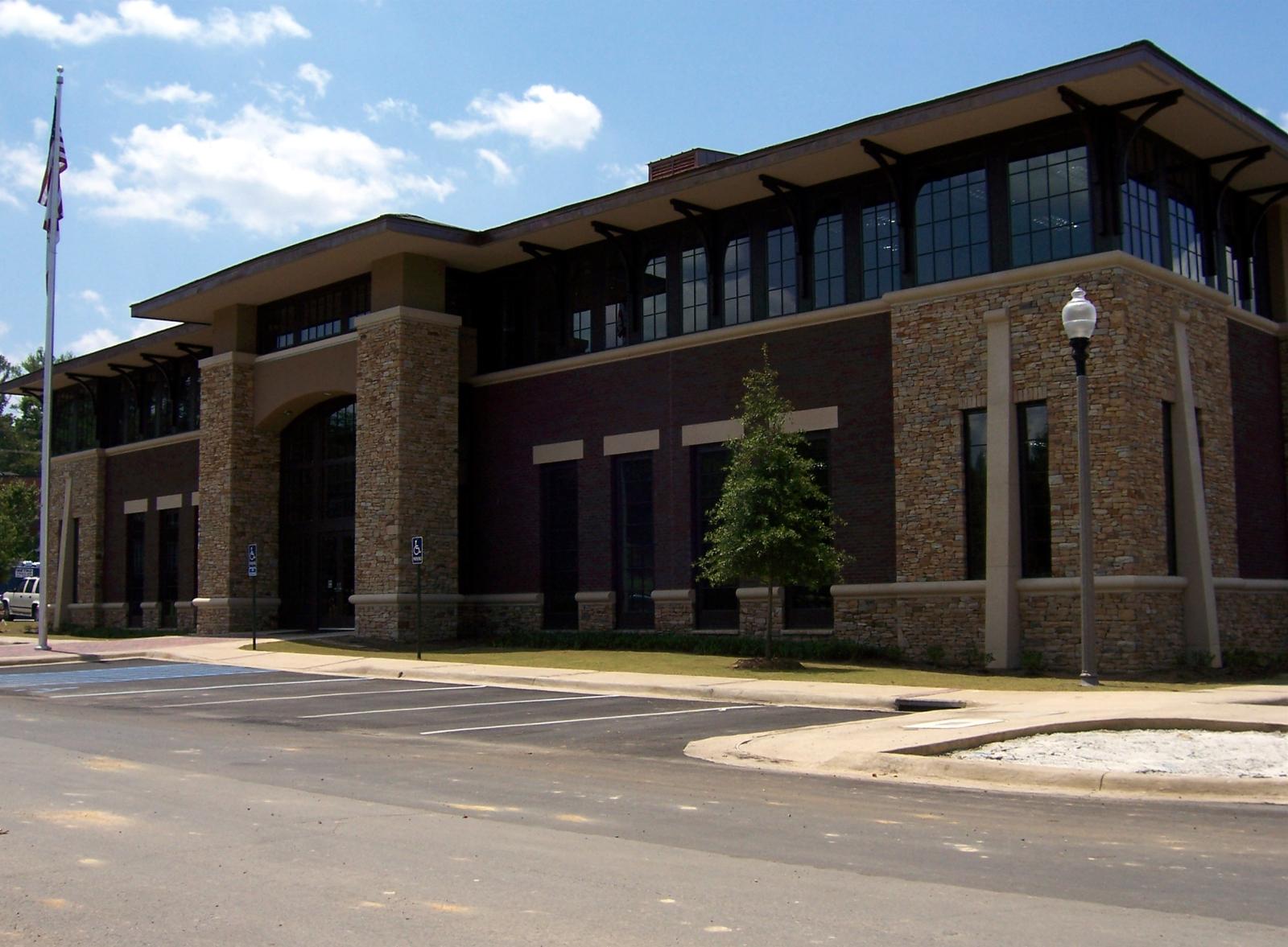
Mountain Brook tops this list for good reason. It’s Alabama’s most affluent suburb, with homes often priced well above $800,000 in 2025. But for all its wealth, exclusivity, and manicured charm, the town’s lifestyle doesn’t always match the cost—especially for anyone not in the top income brackets.
High property taxes, aging infrastructure, limited diversity in housing options, and increasing congestion are growing concerns. Public spaces are lovely but limited, and much of the town’s appeal is aesthetic. For those without generational wealth or six-figure incomes, Mountain Brook’s luxury feels more exclusionary than enriching.
Mountain Brook – Luxury 96.47 vs. Lifestyle 74.44
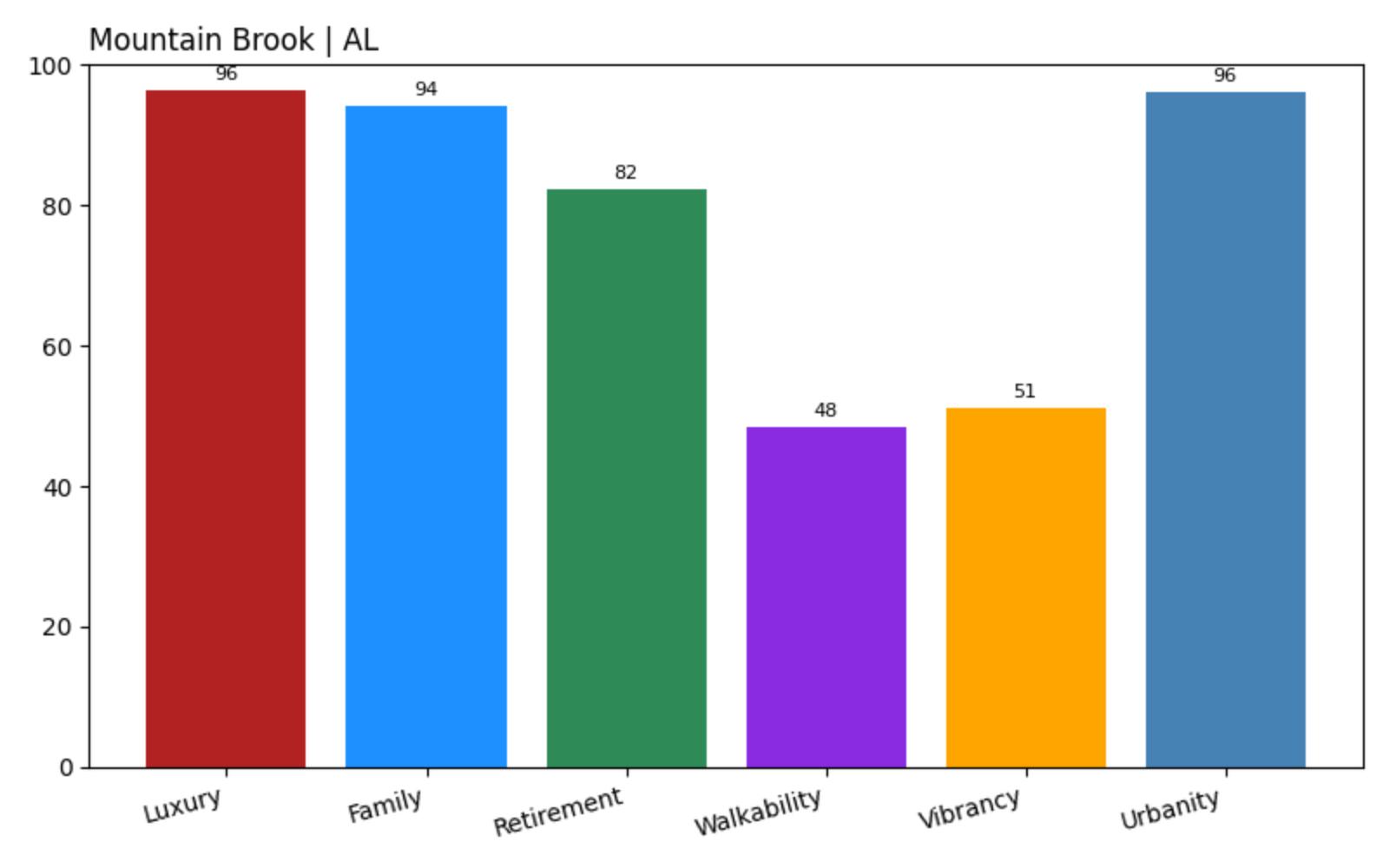
- Luxury Score: 96.47
- Family Friendliness: 94.19
- Retirement Friendliness: 82.30
- Walkability: 48.39
- Vibrancy: 51.12
- Urban Sophistication: 96.21
The highest luxury score in the state—but the lifestyle isn’t far enough ahead to justify the price for most. Mountain Brook is gorgeous, yes. But whether it’s truly worth the price? That depends on how deep your pockets go.
Sources
- Zillow – Homewood, AL Housing Market: 2025 Home Prices & Trends
- Realtor.com – Homewood, AL 2025 Housing Market
- Zillow – Homewood (Buena Vista Highlands), AL Housing Data
- Zillow – Homewood, AL Rental Market Trends
- Zillow – Mountain Brook, AL Housing Market: 2025 Home Prices & Trends
- Rocket Homes – Mountain Brook Housing Market Report May 2025
- Zillow – Alabama Housing Market: 2025 Home Prices & Trends
- Wikipedia – Homewood, Alabama
- Wikipedia – Mountain Brook, Alabama






